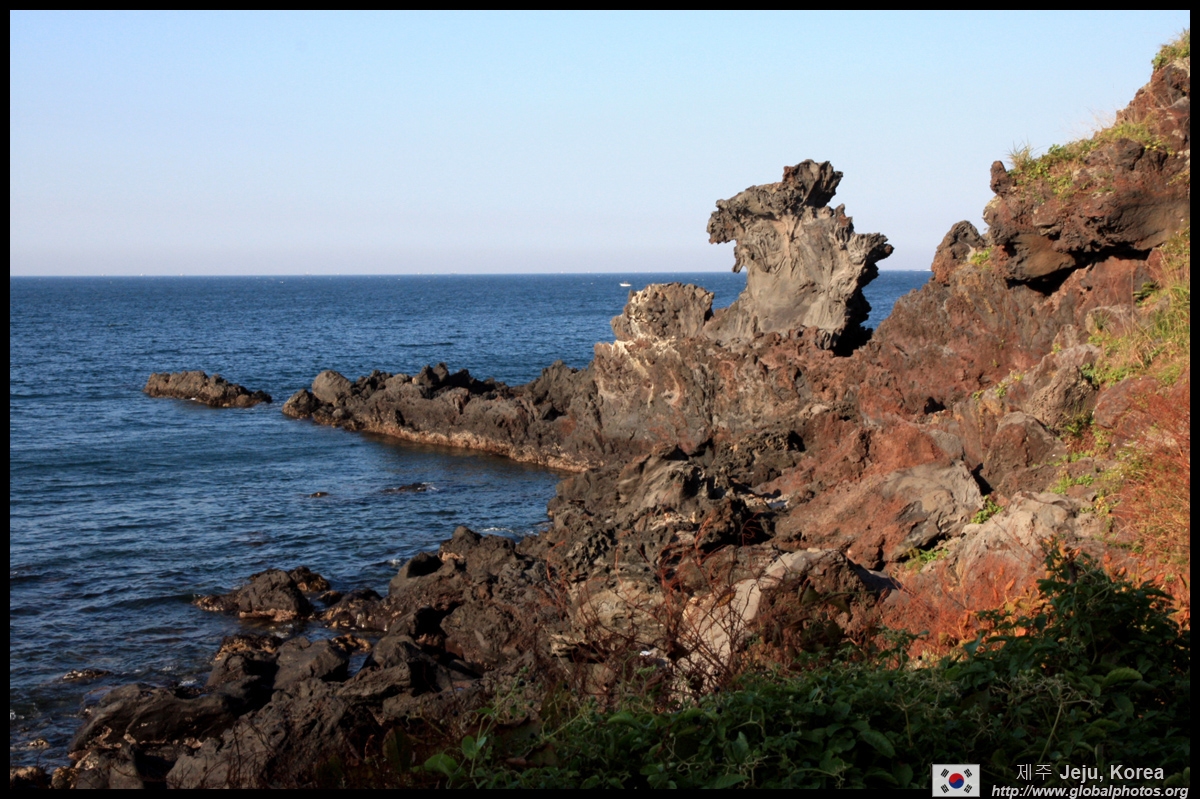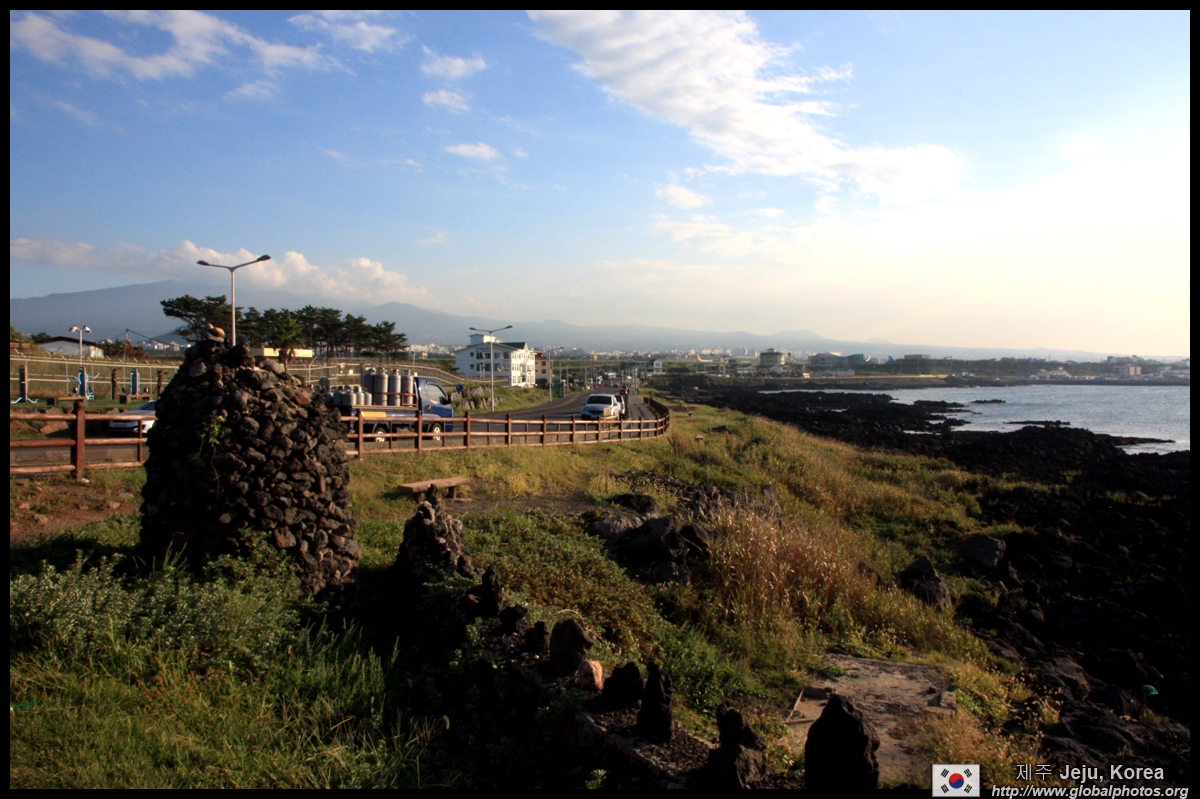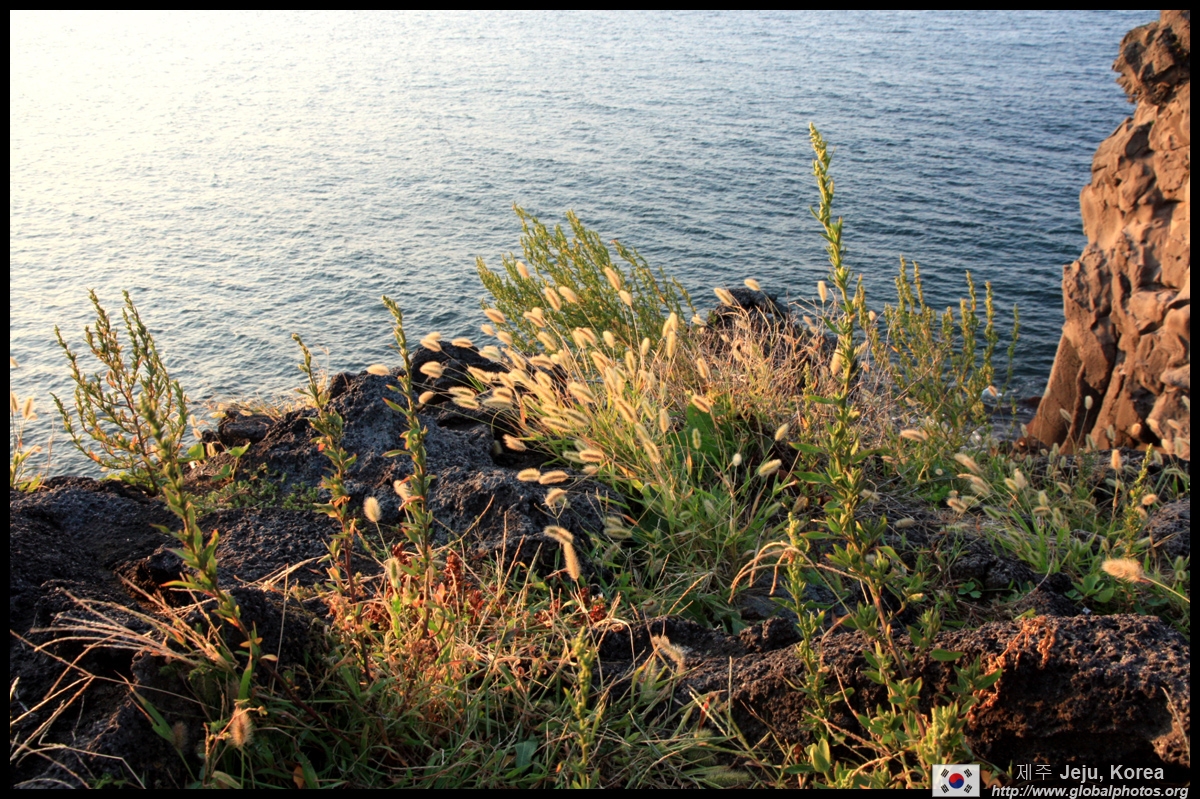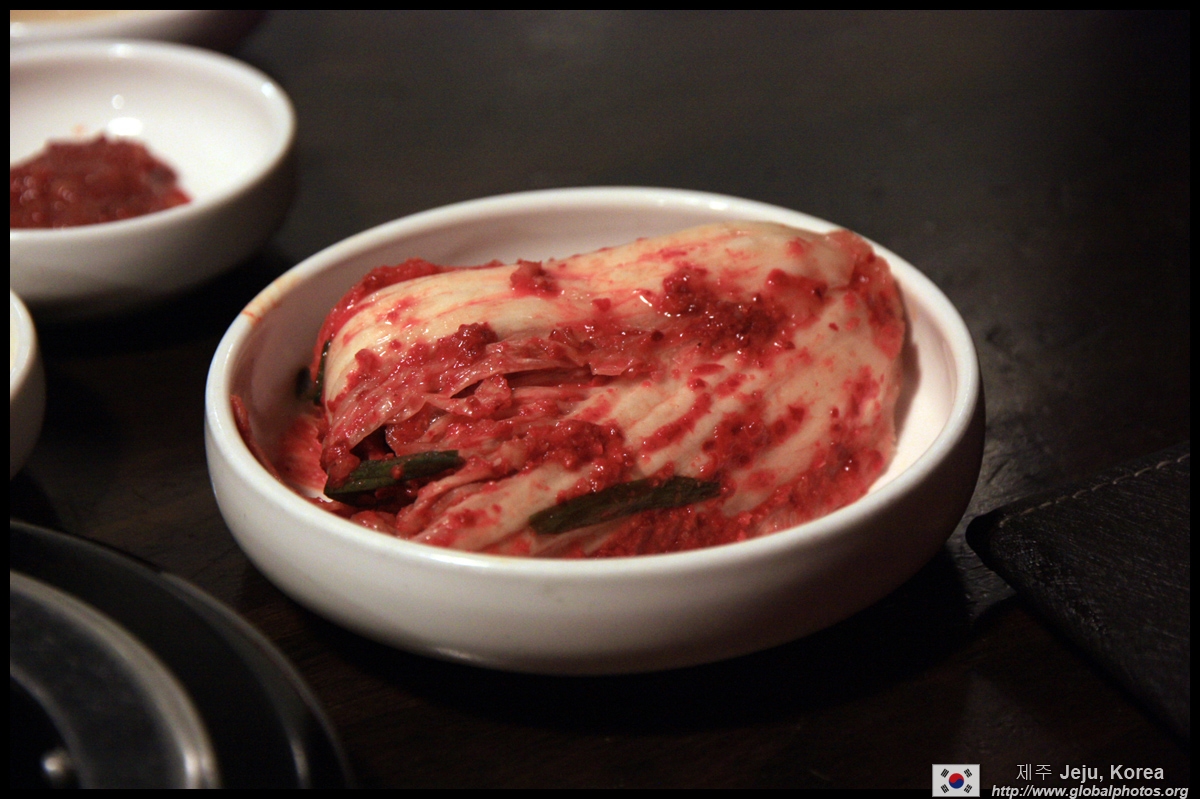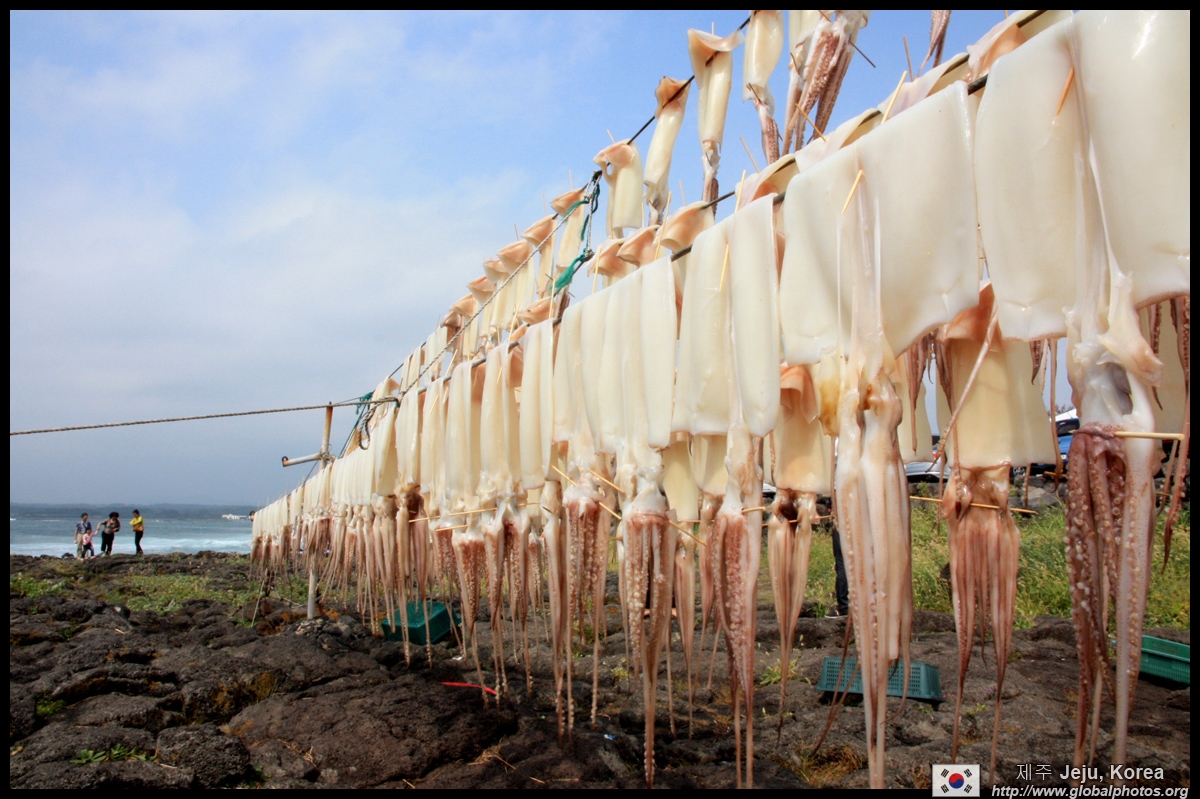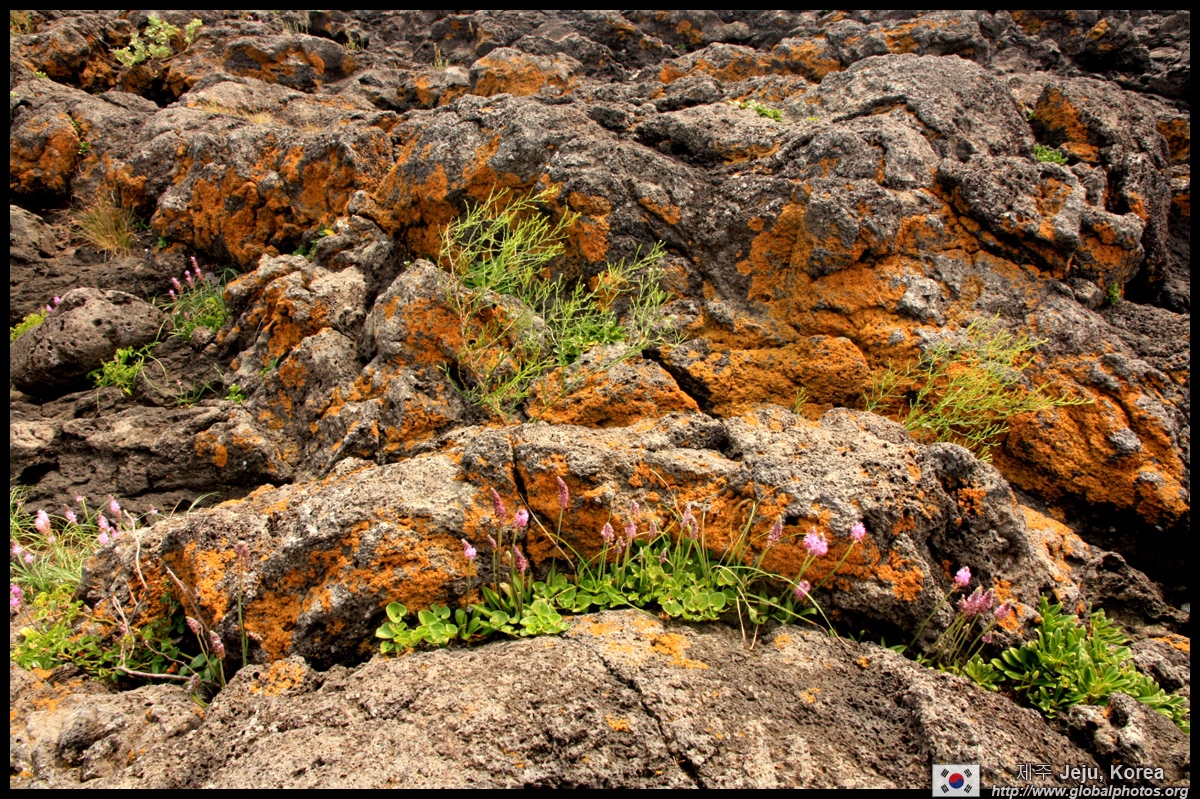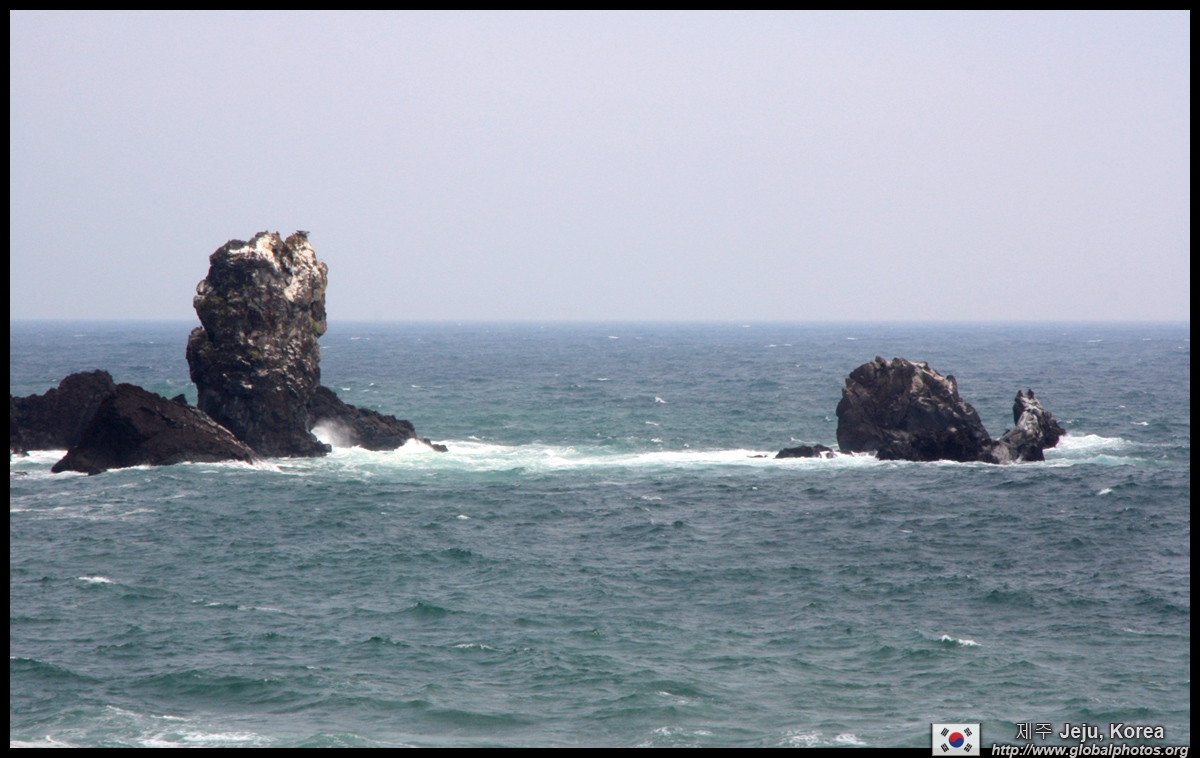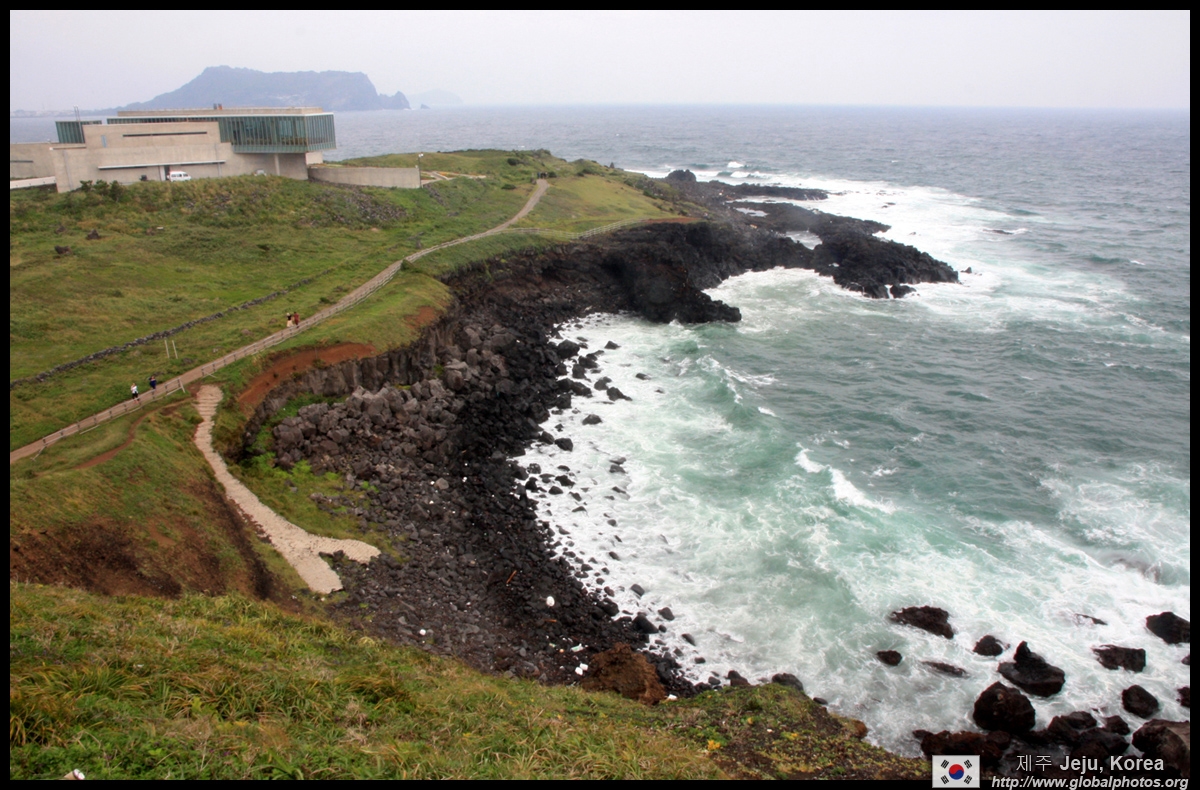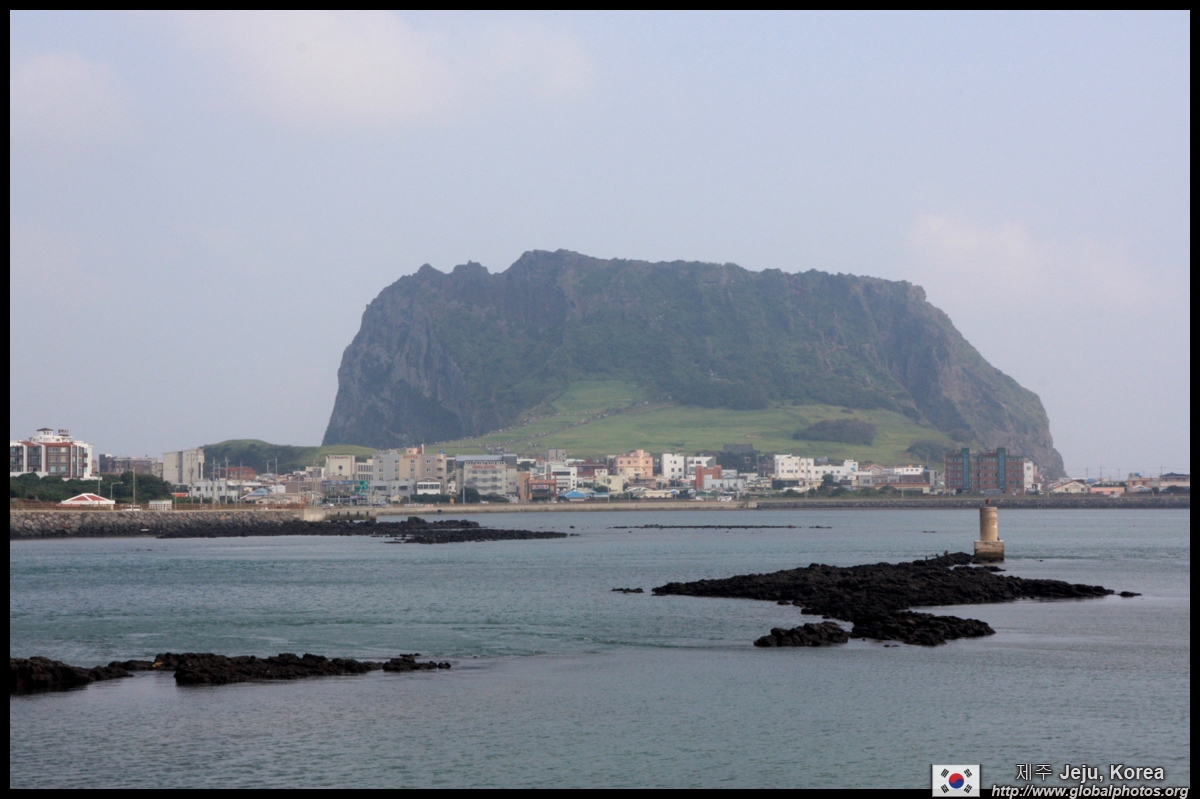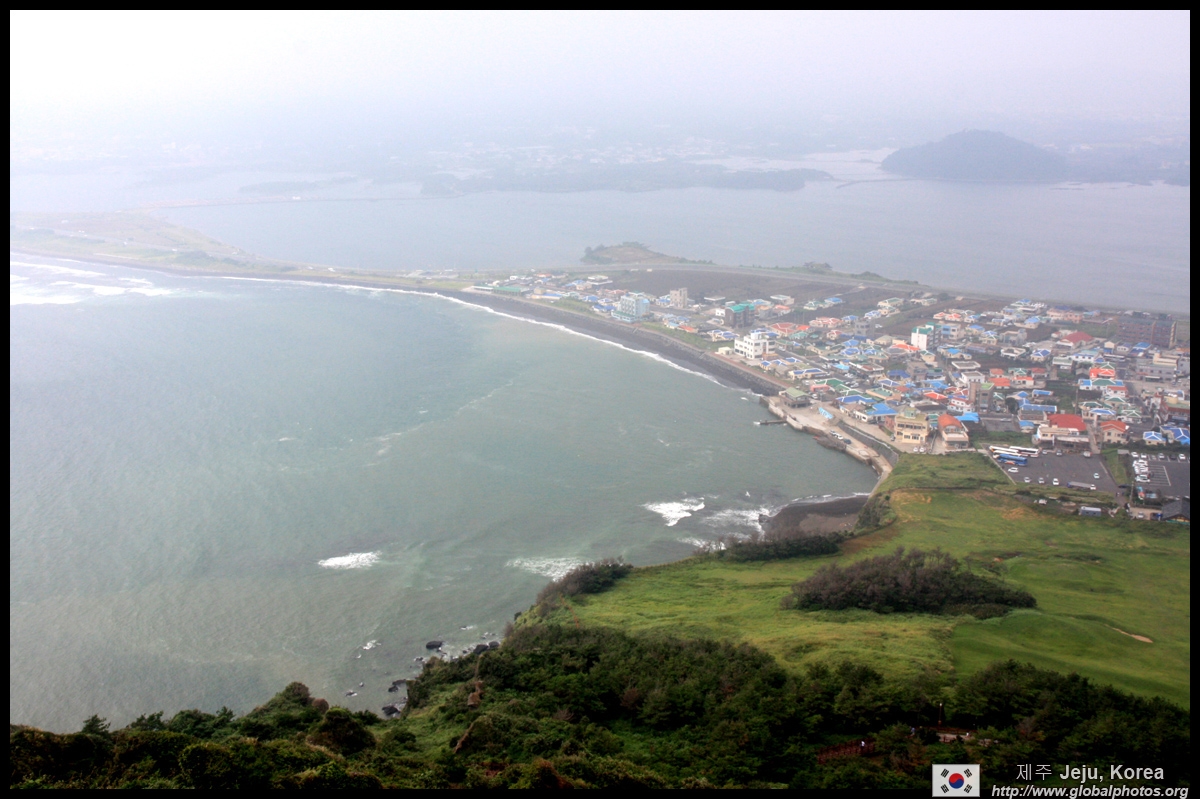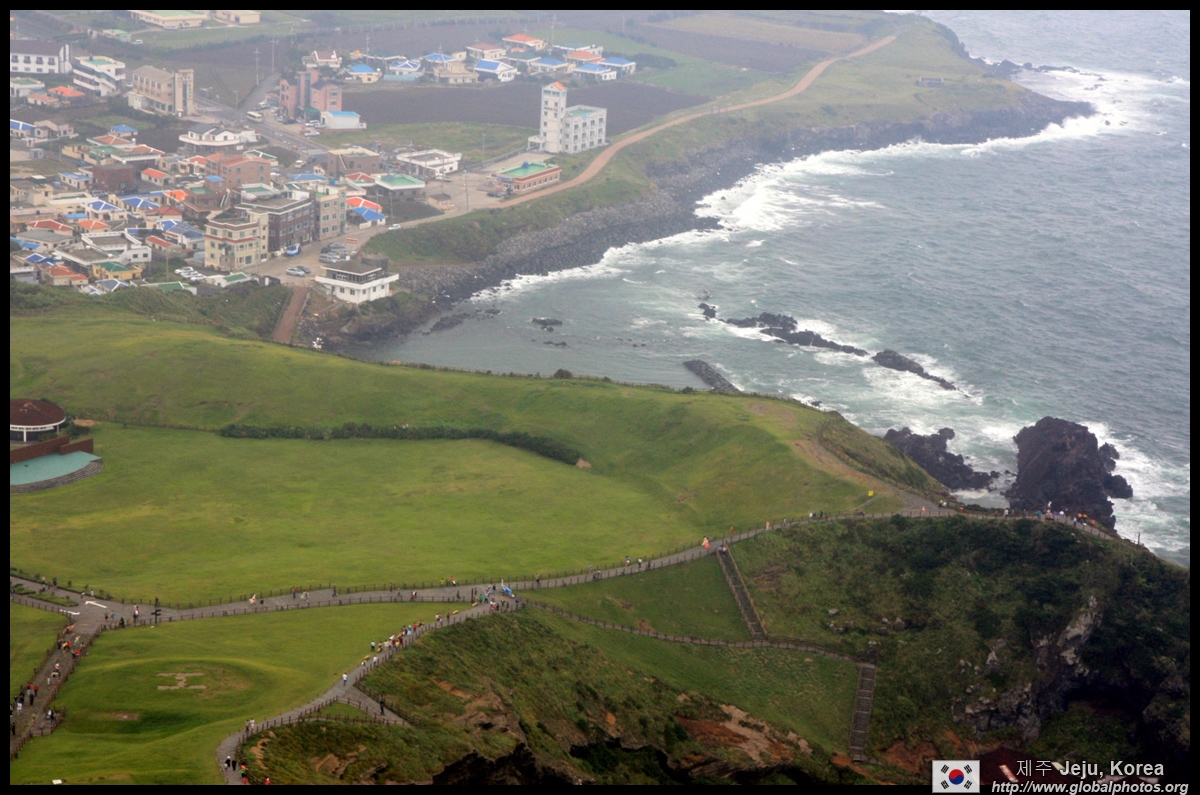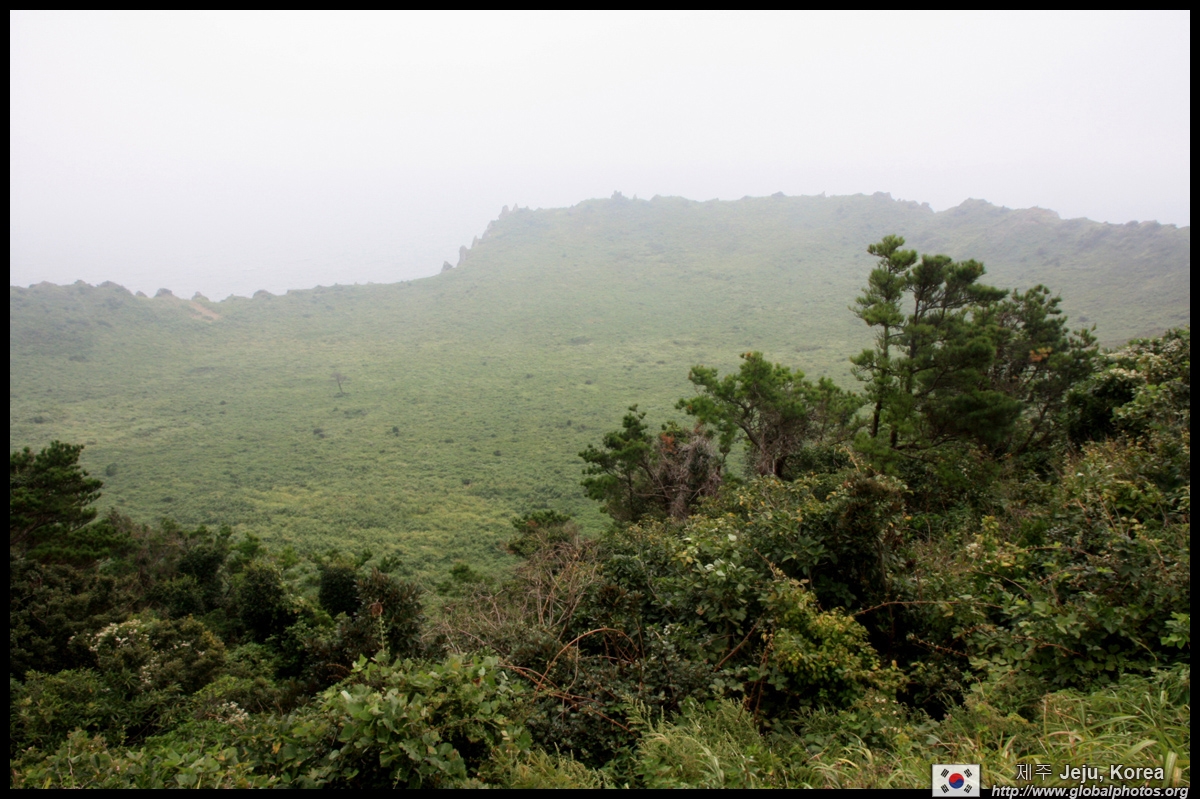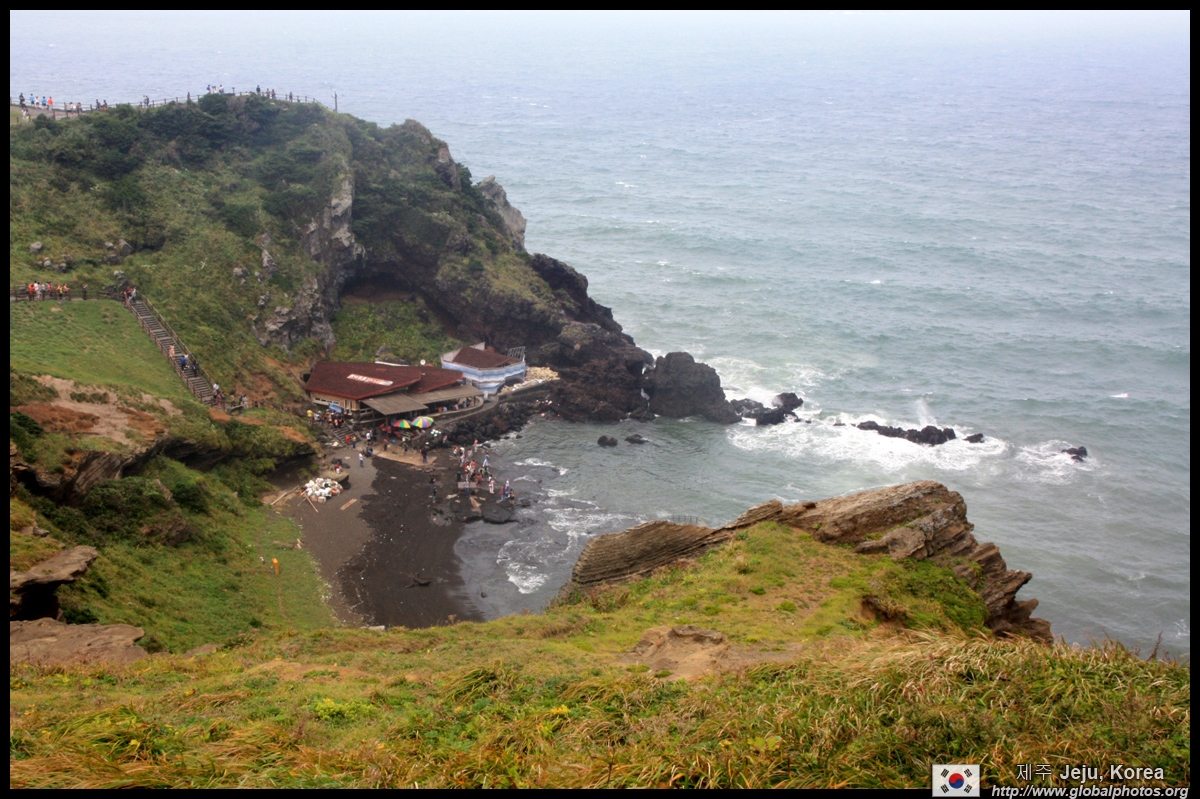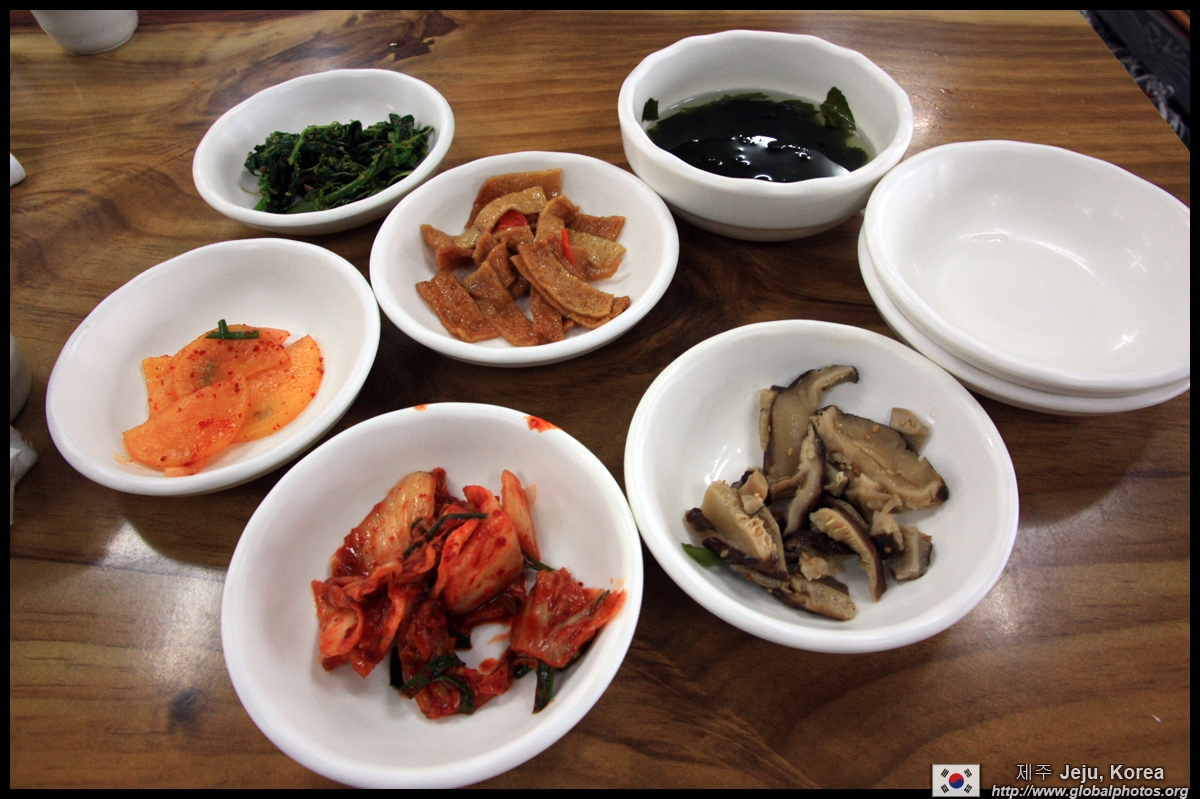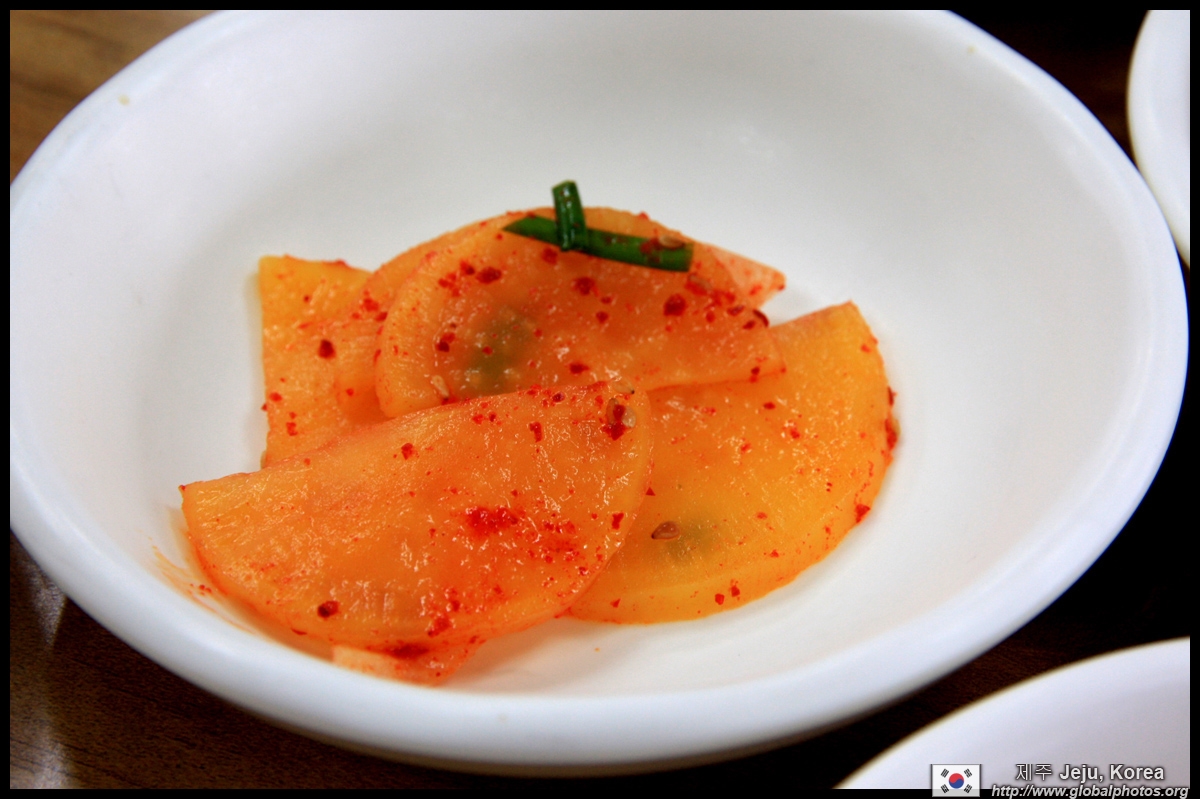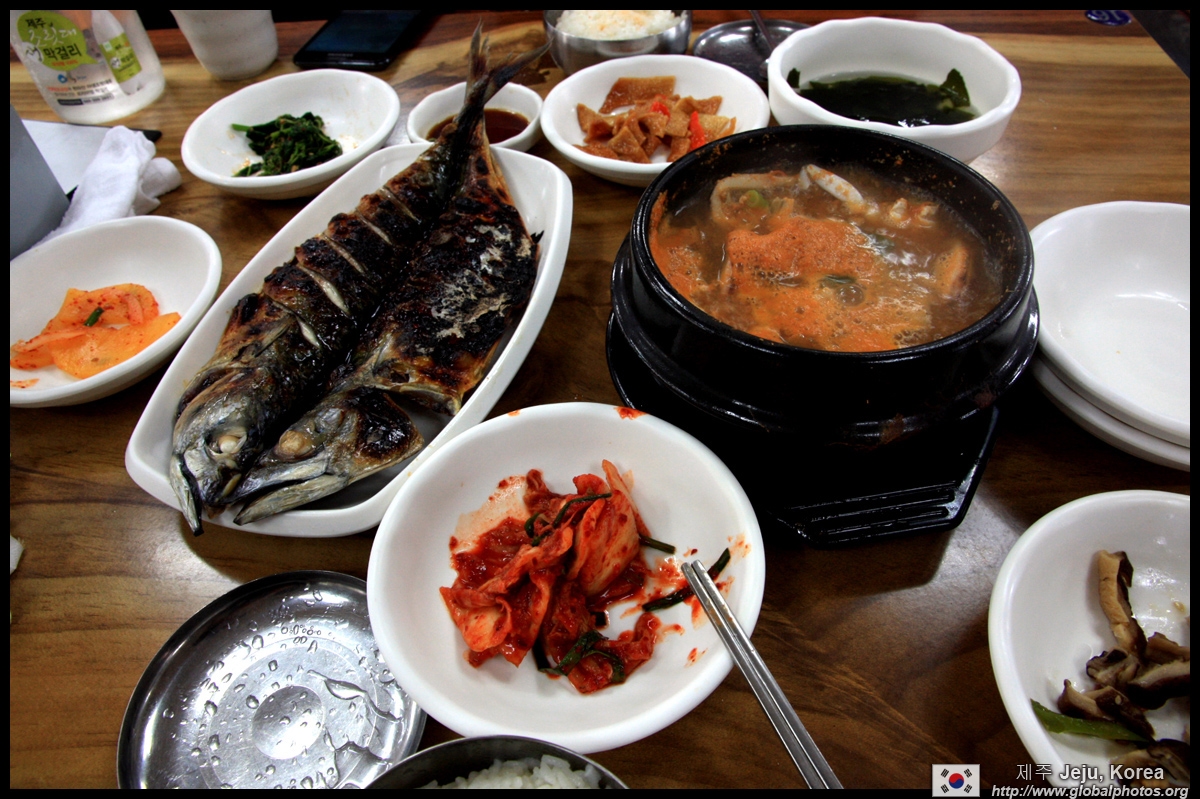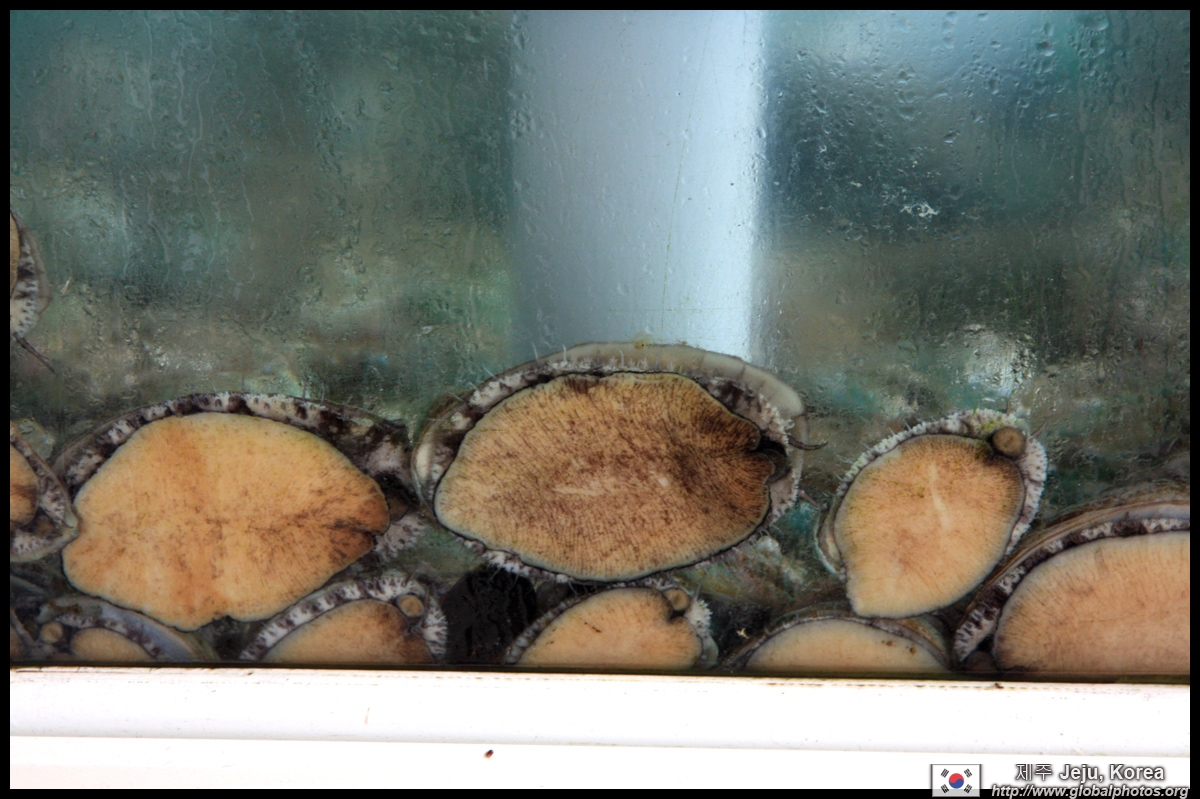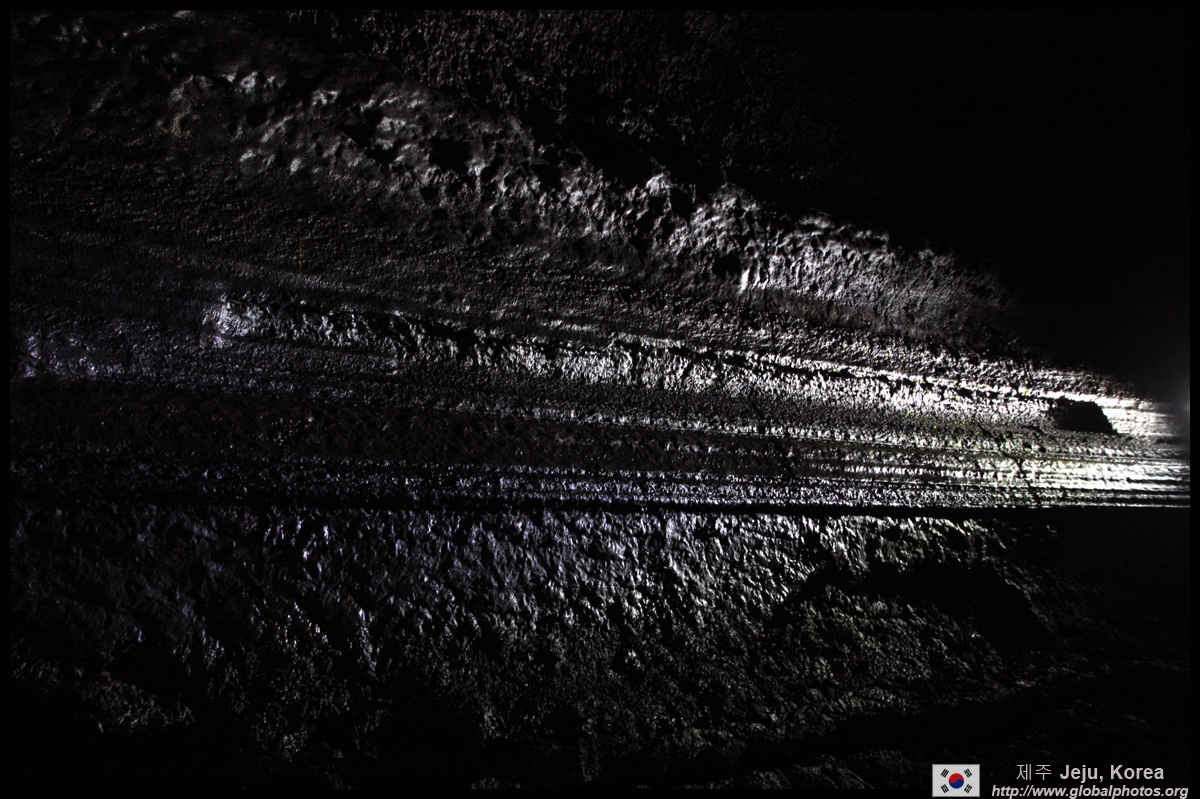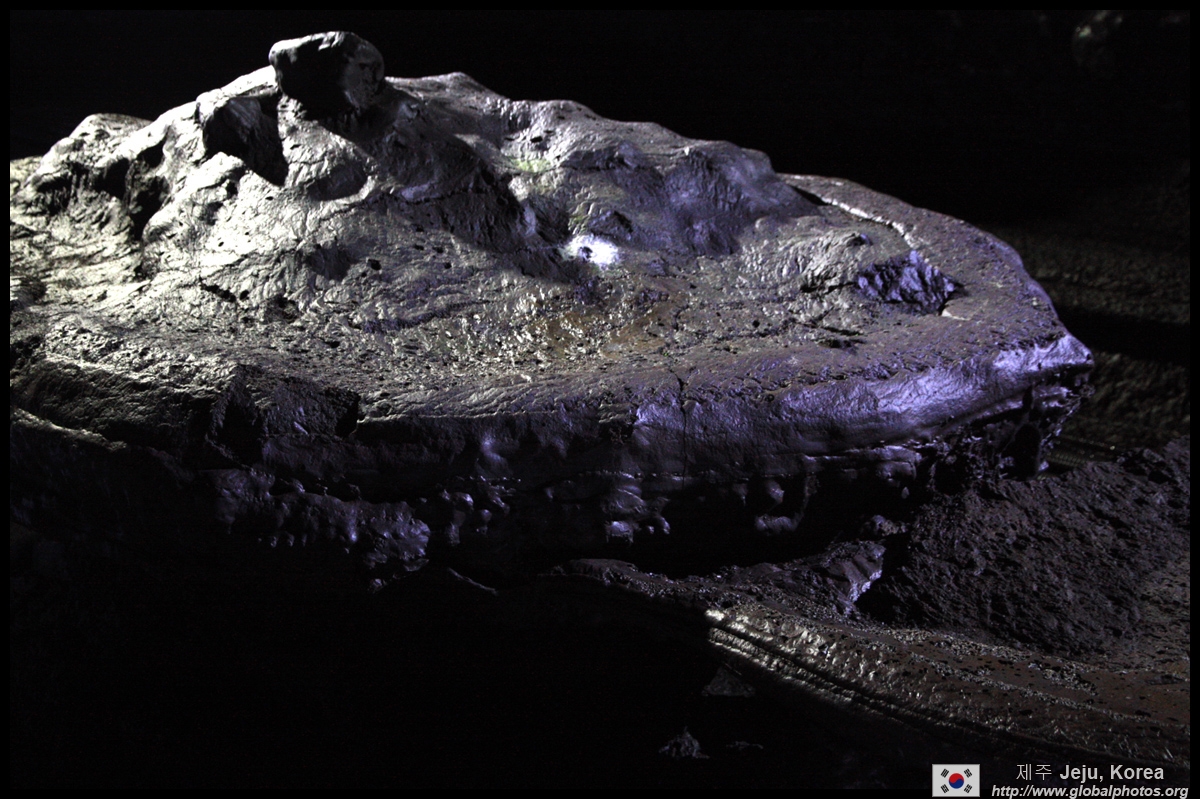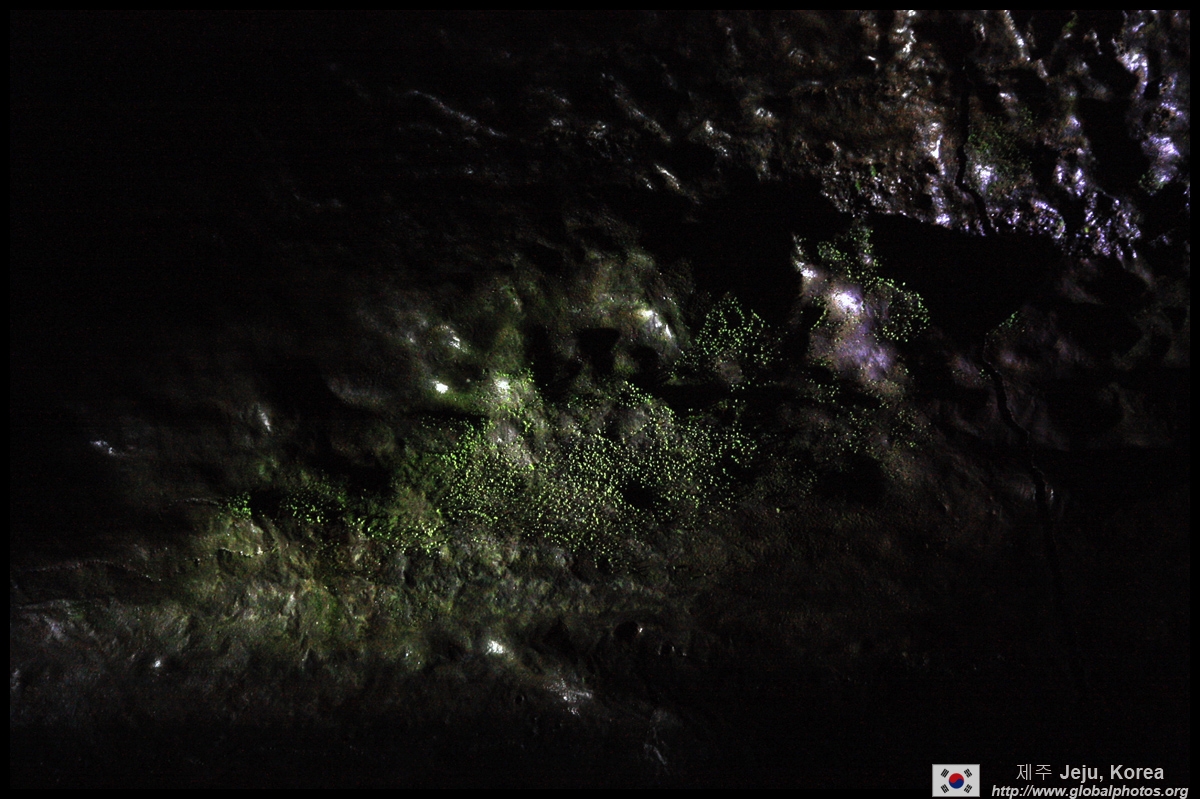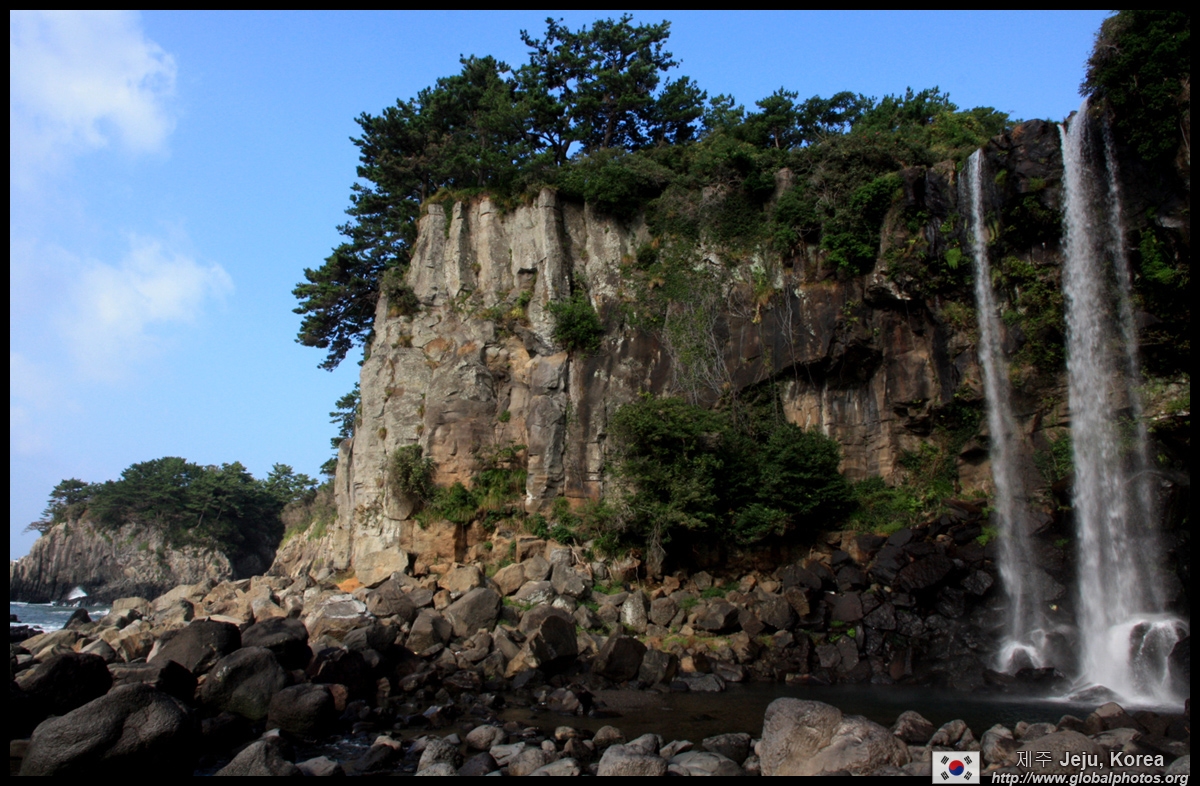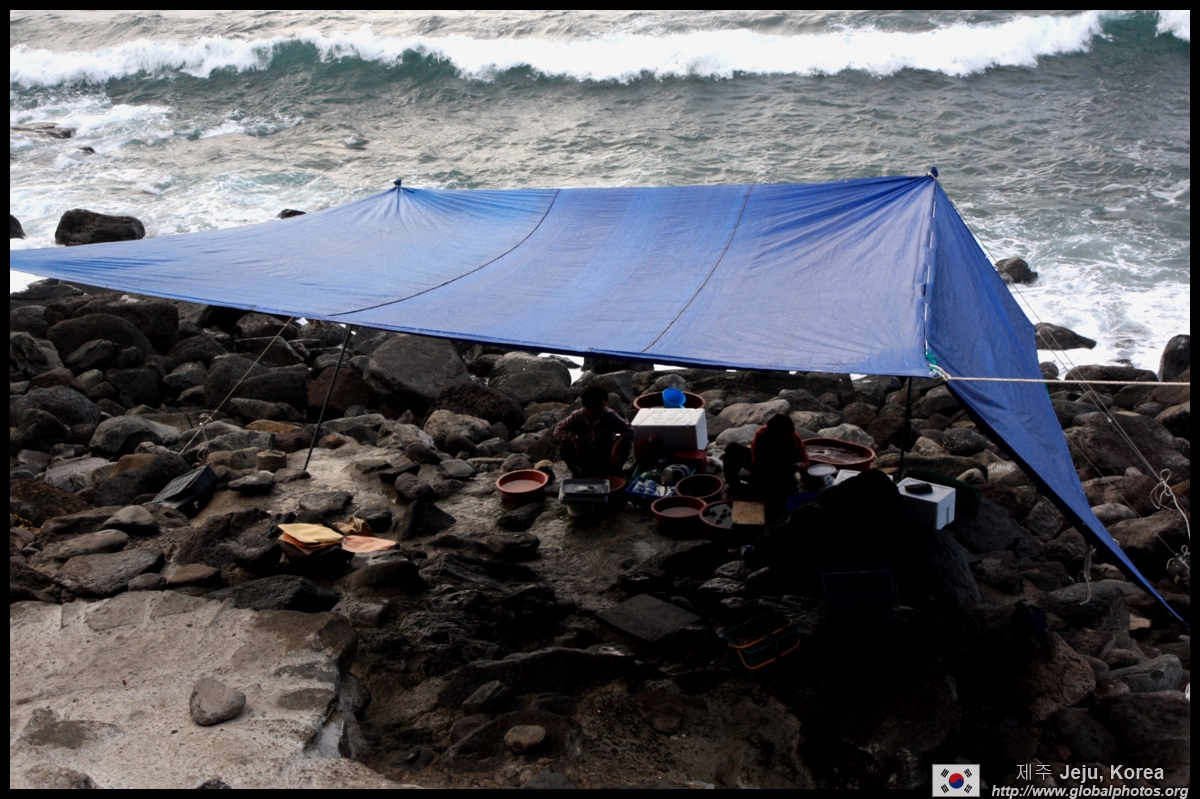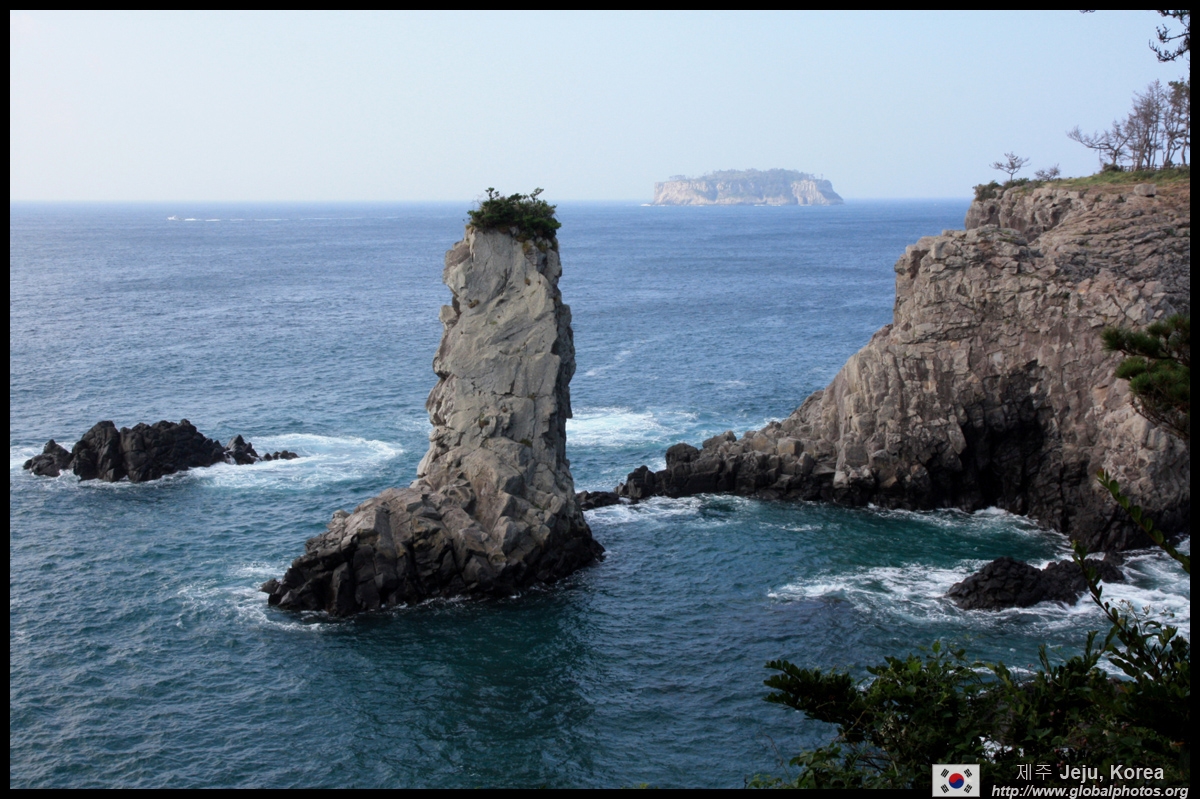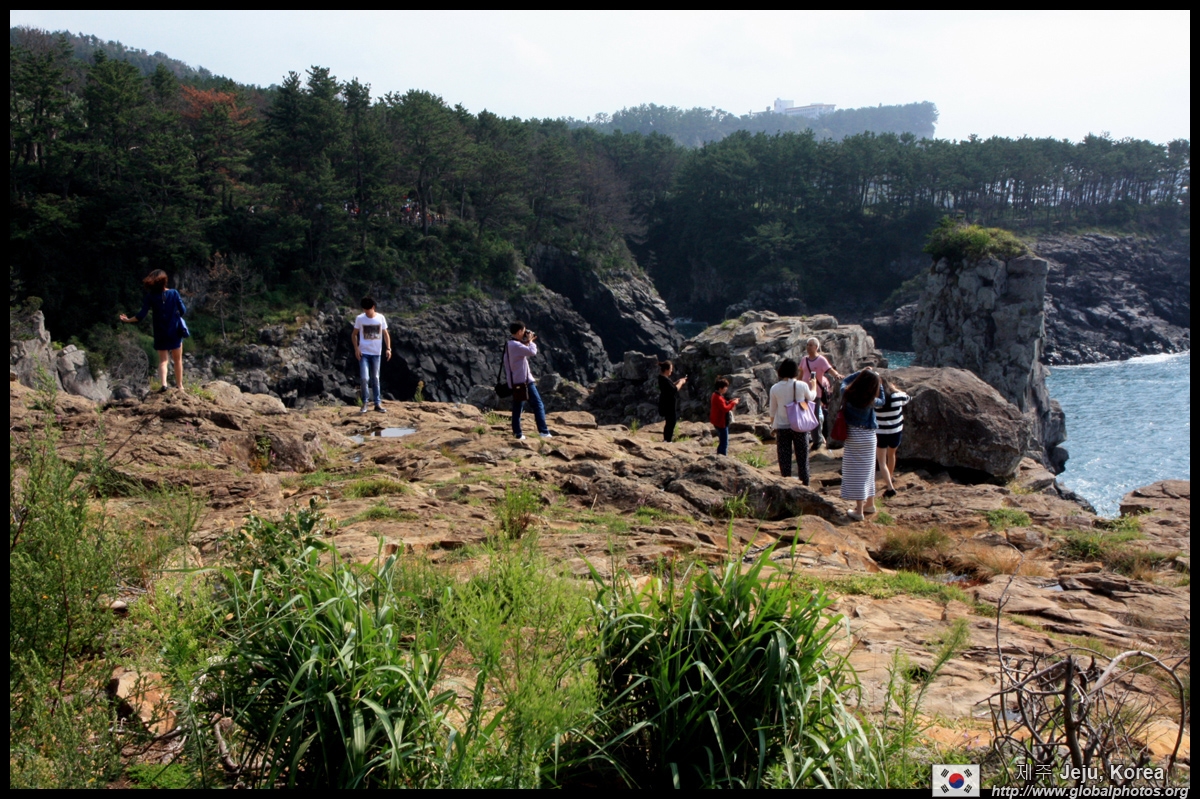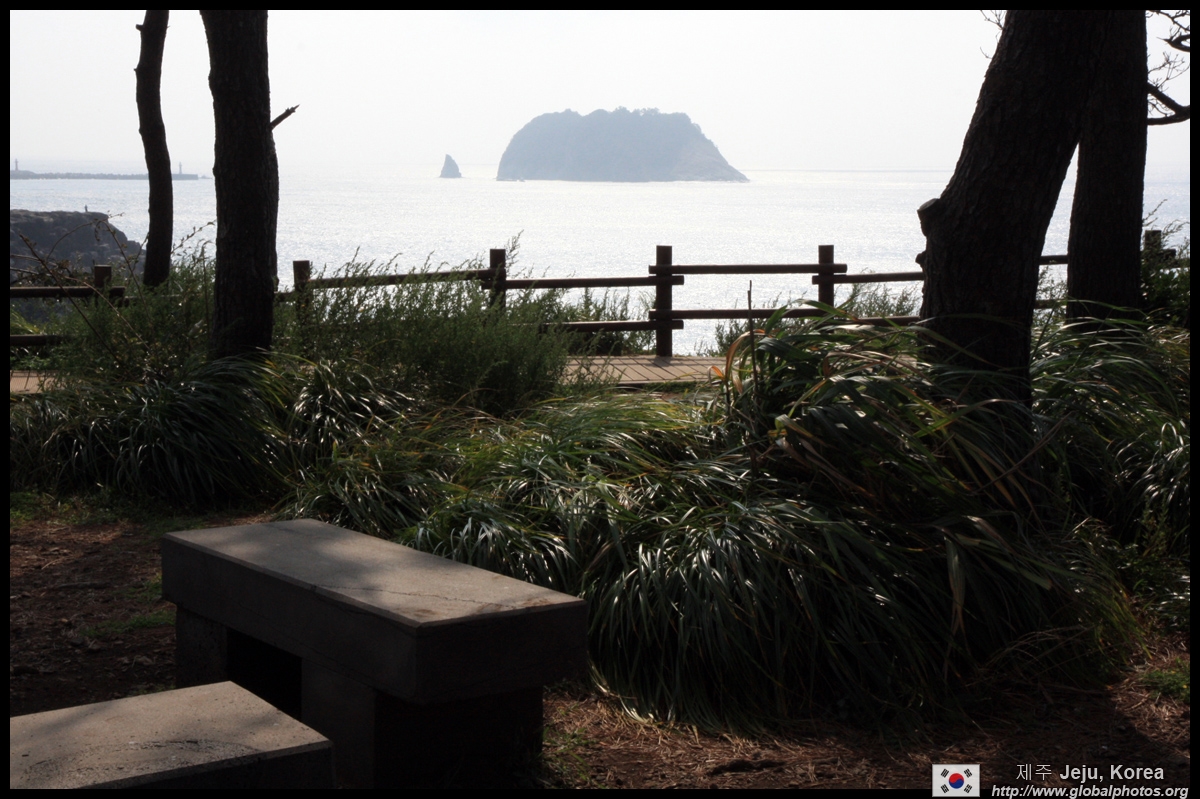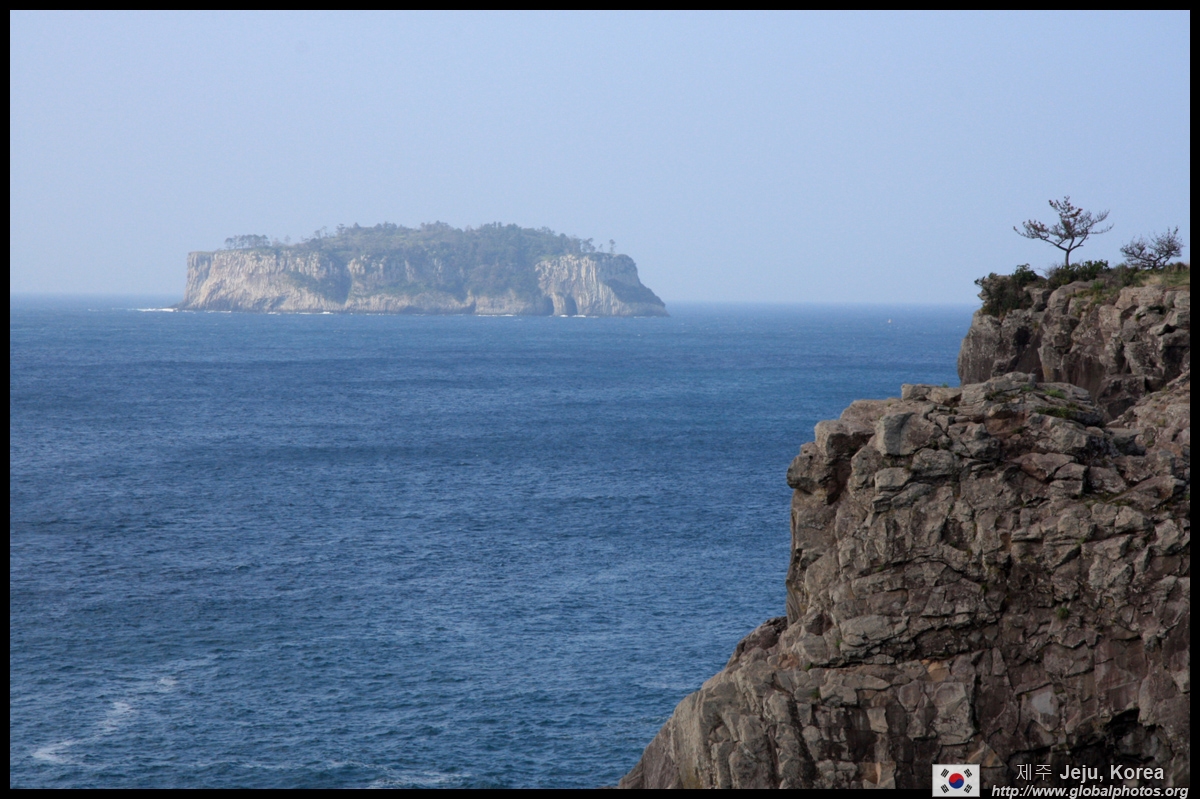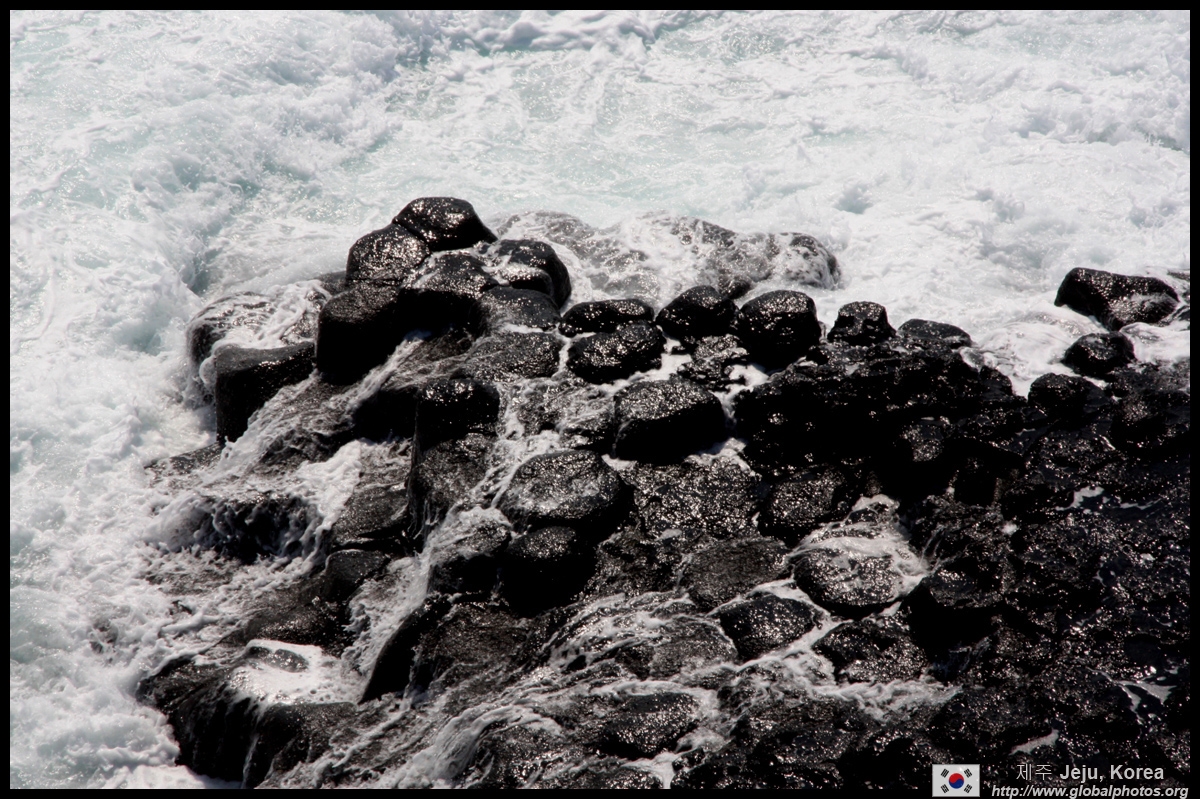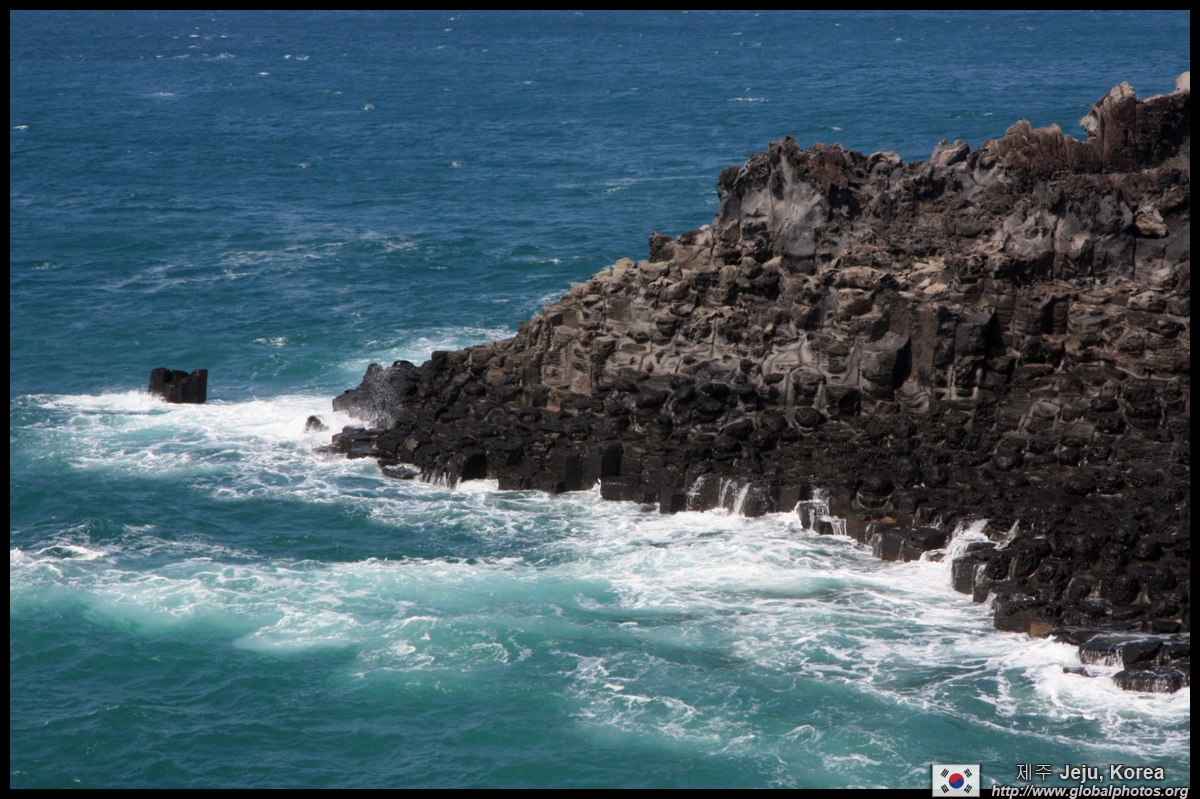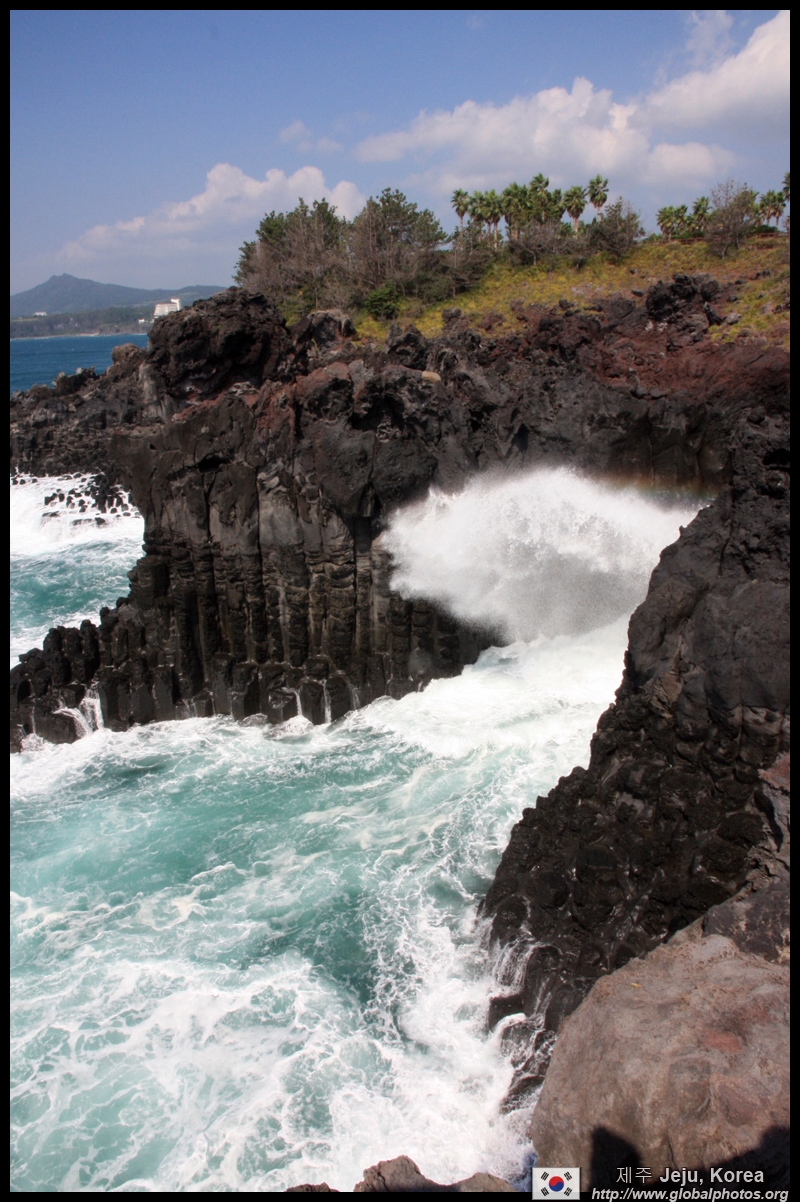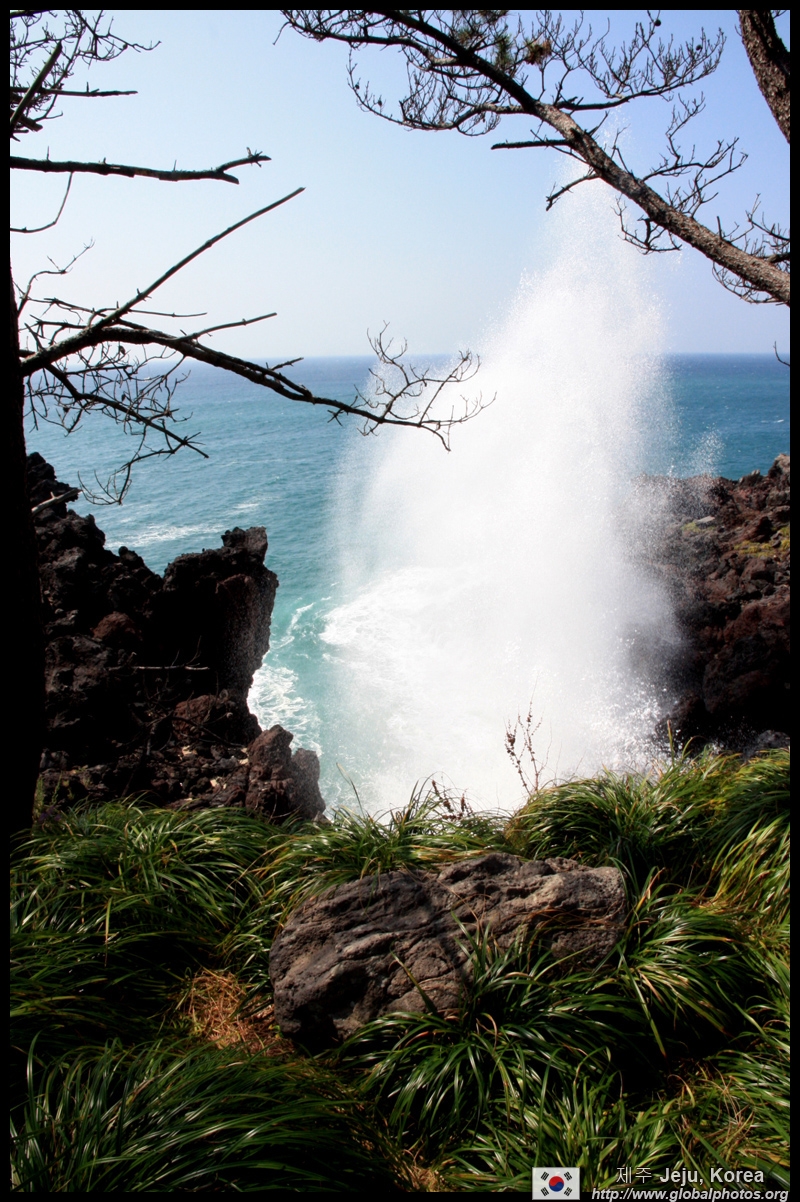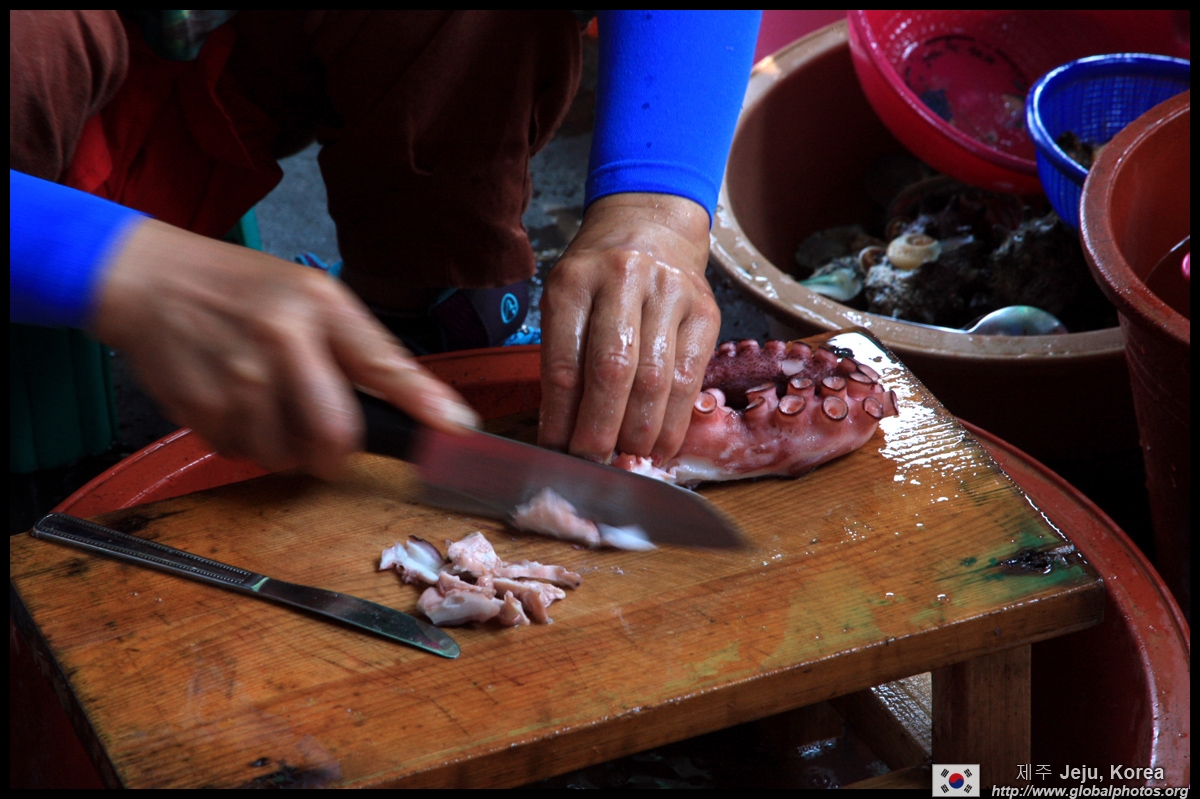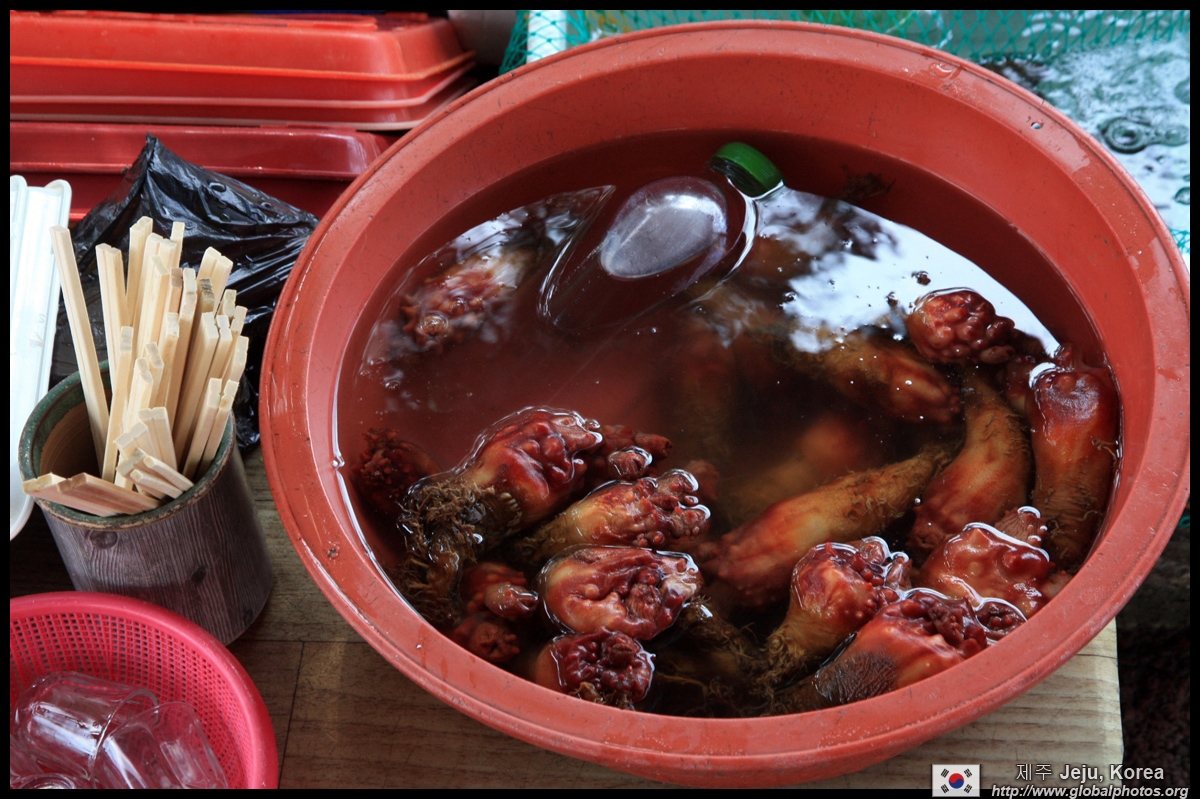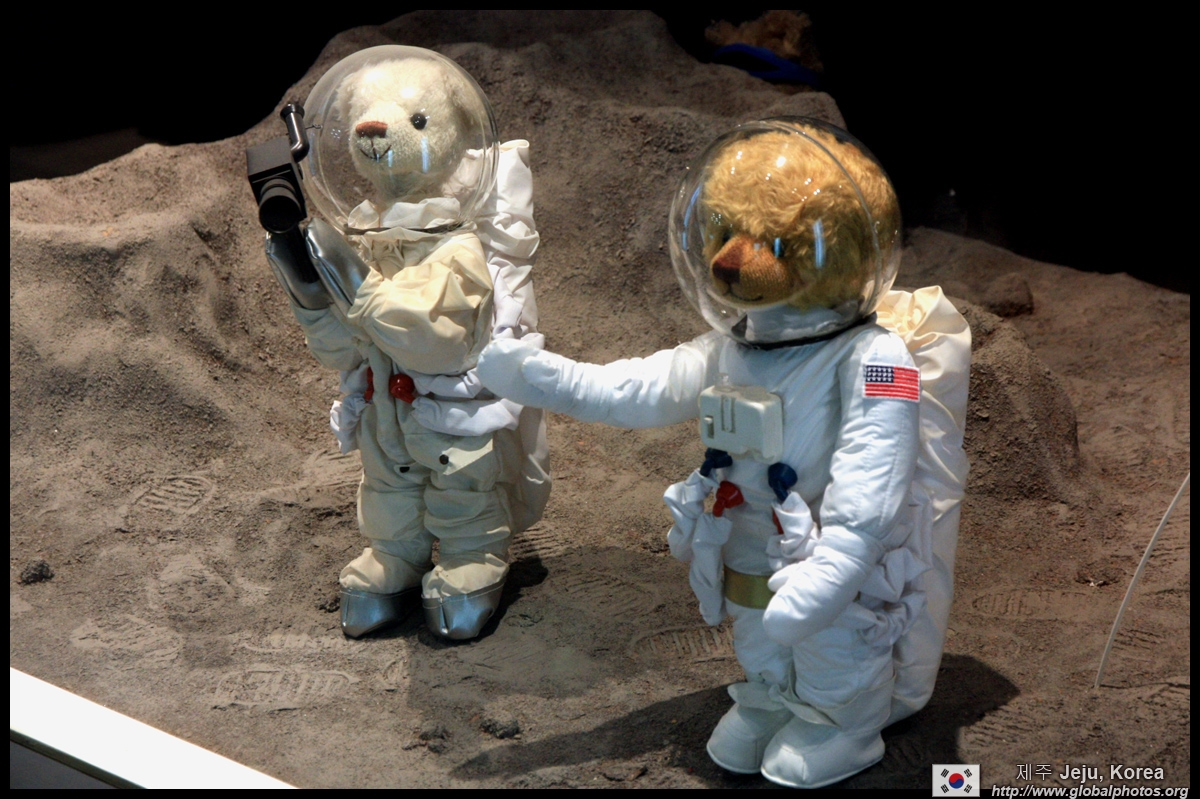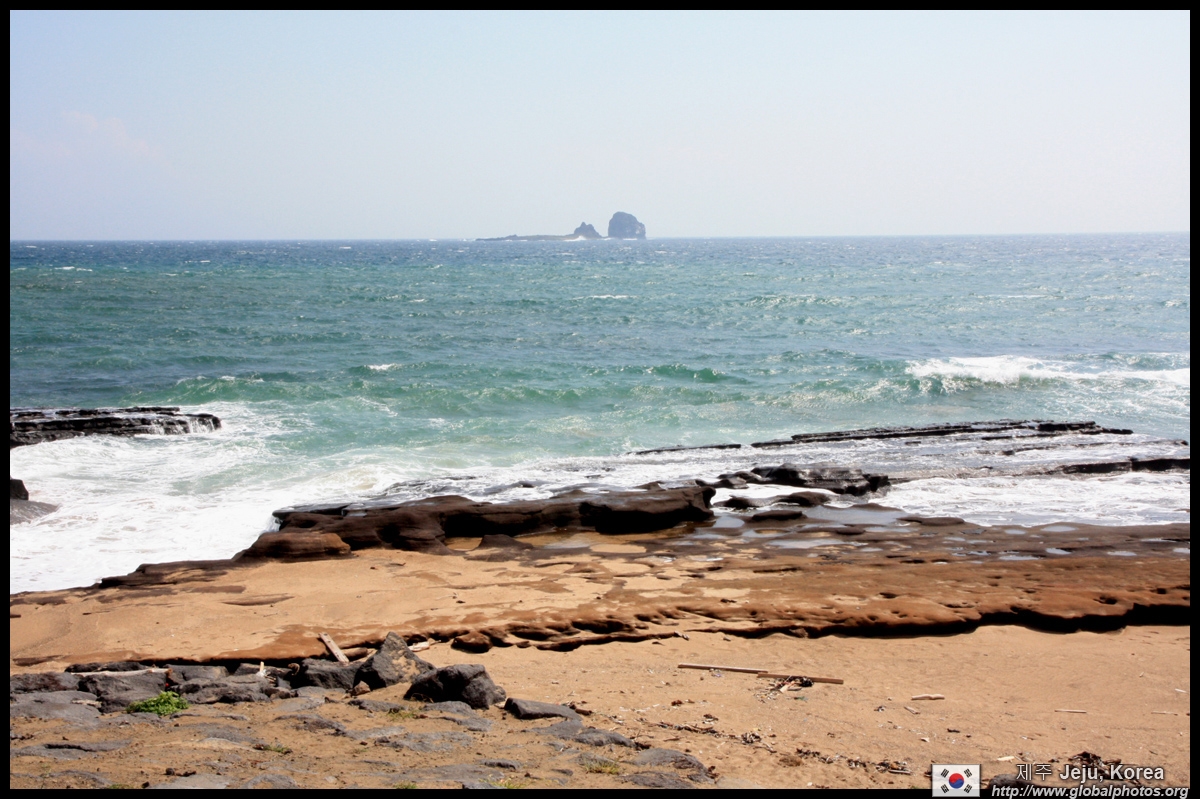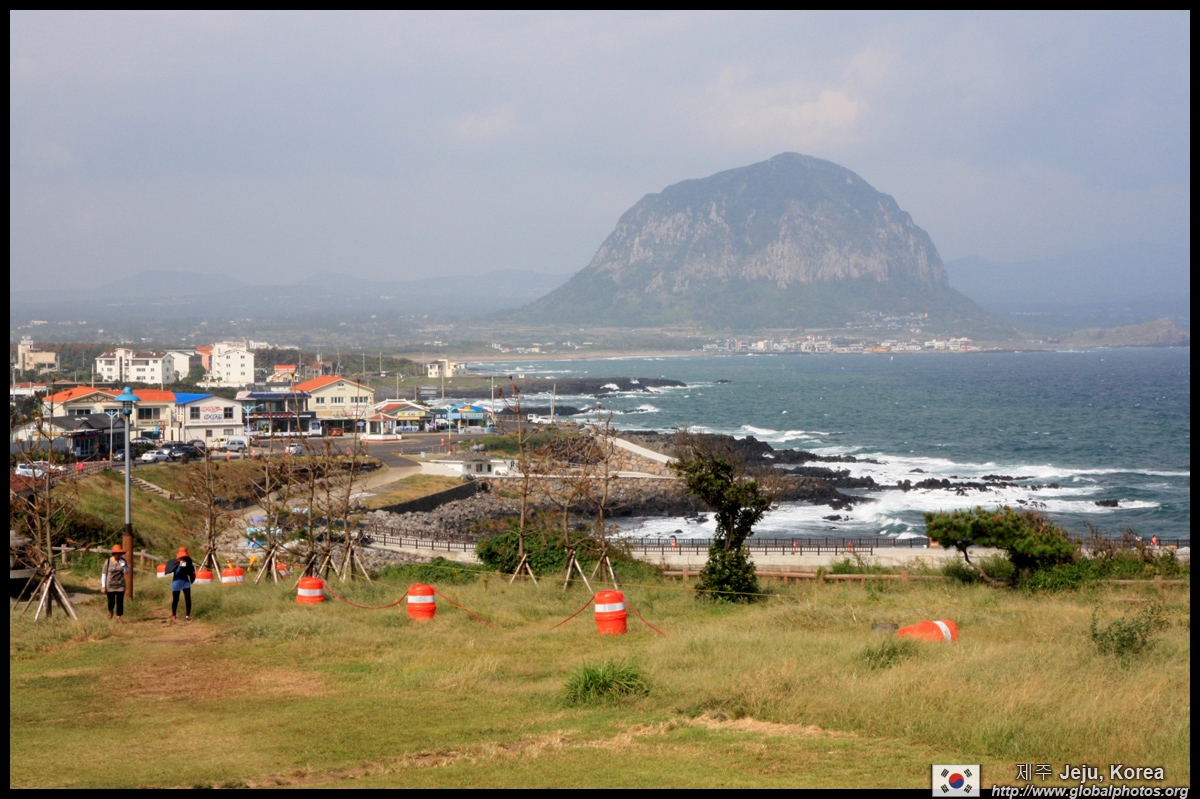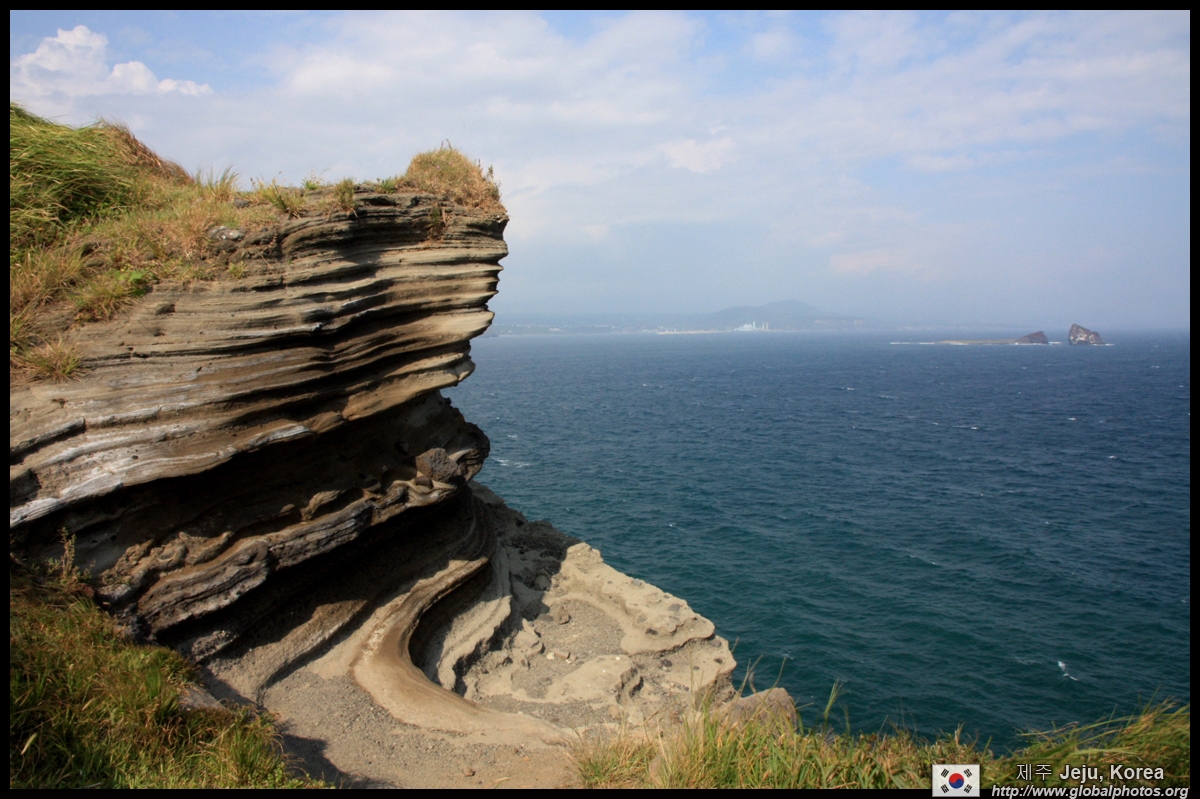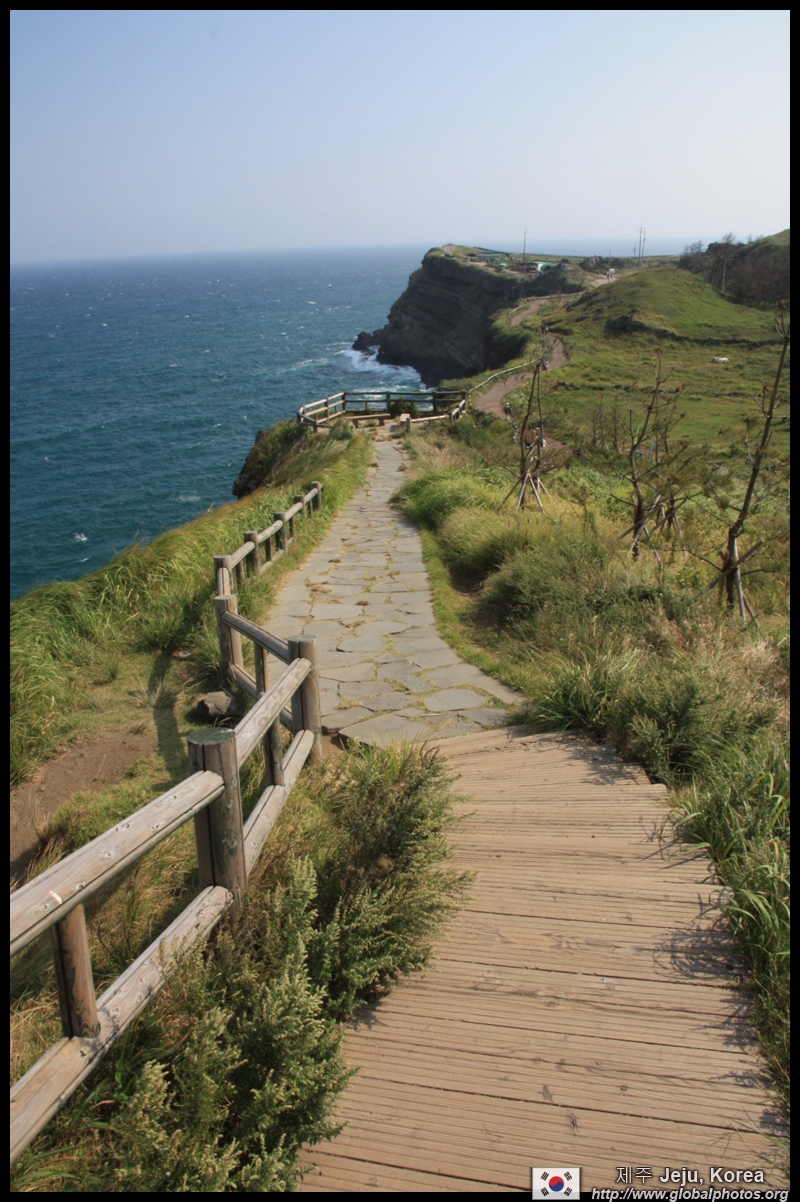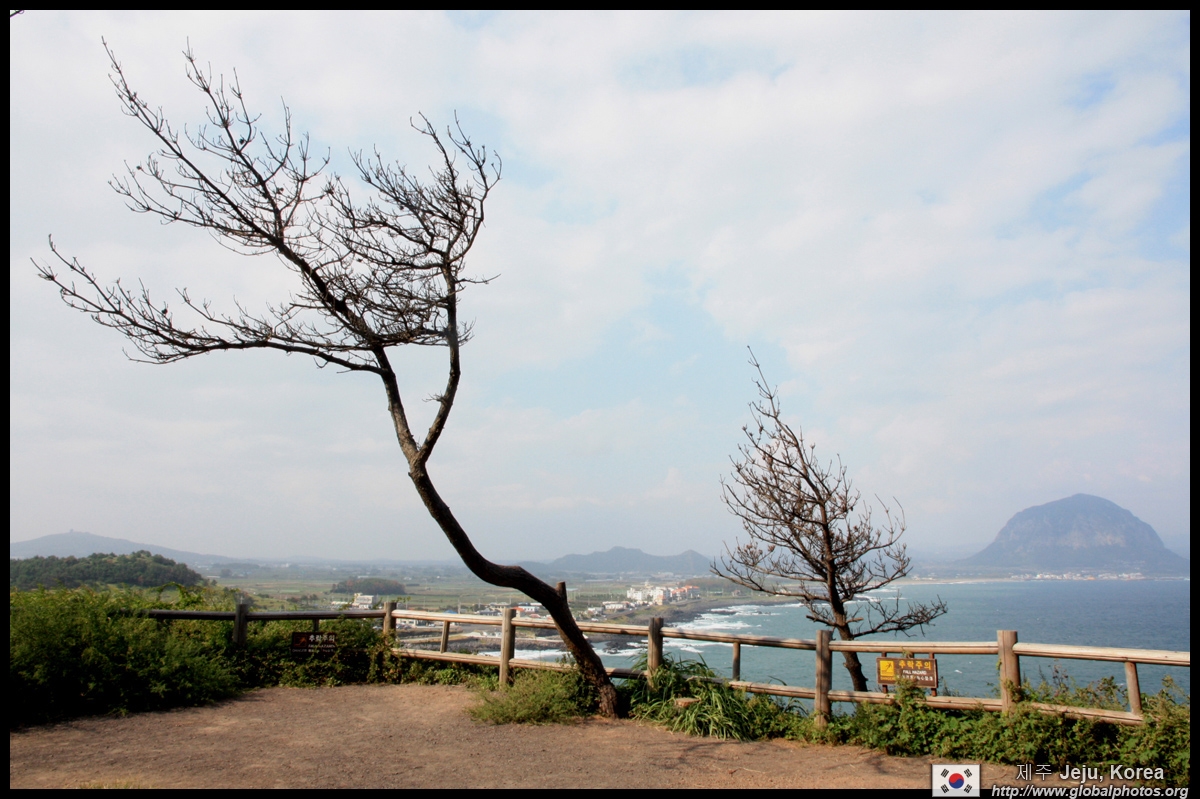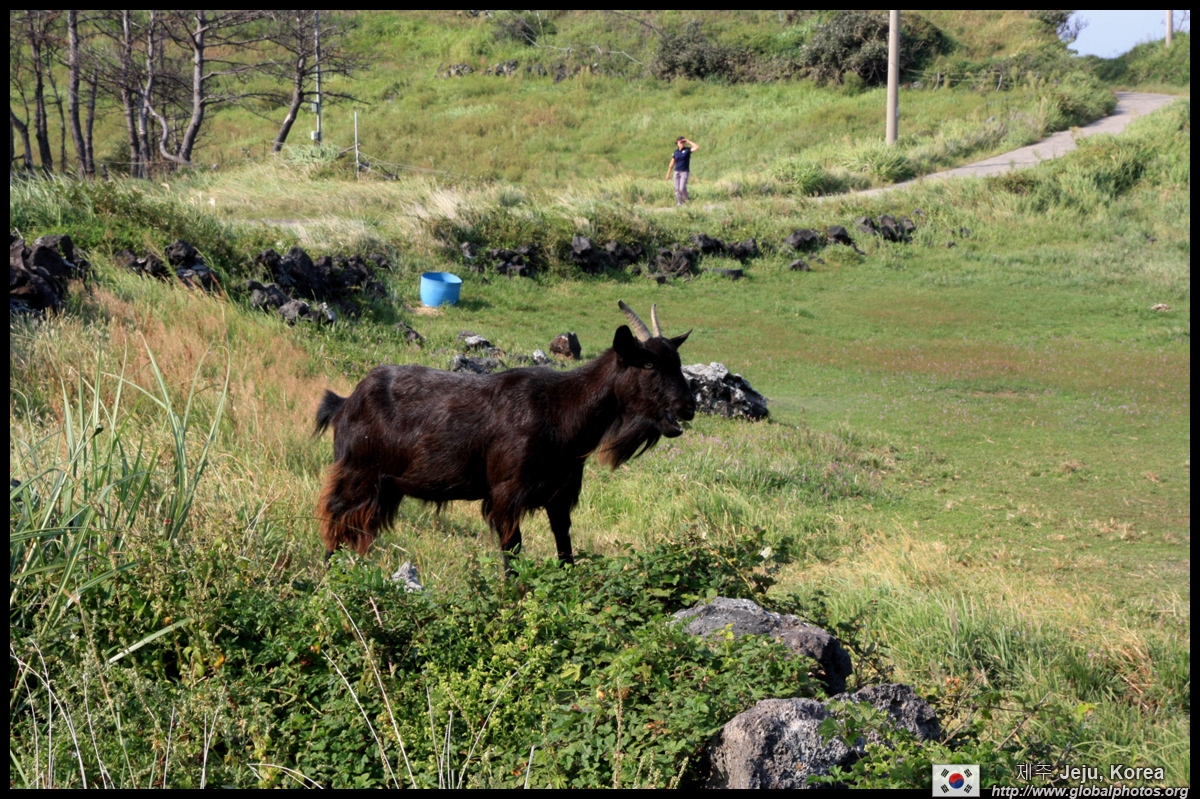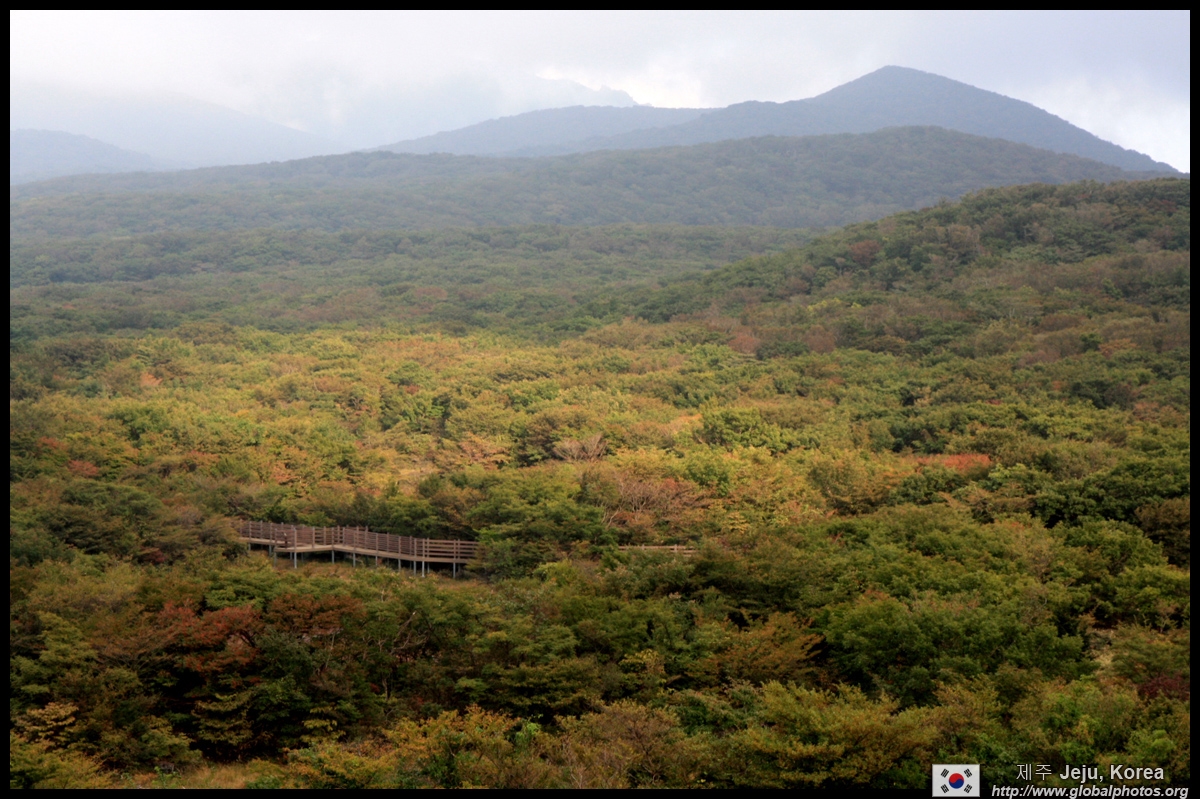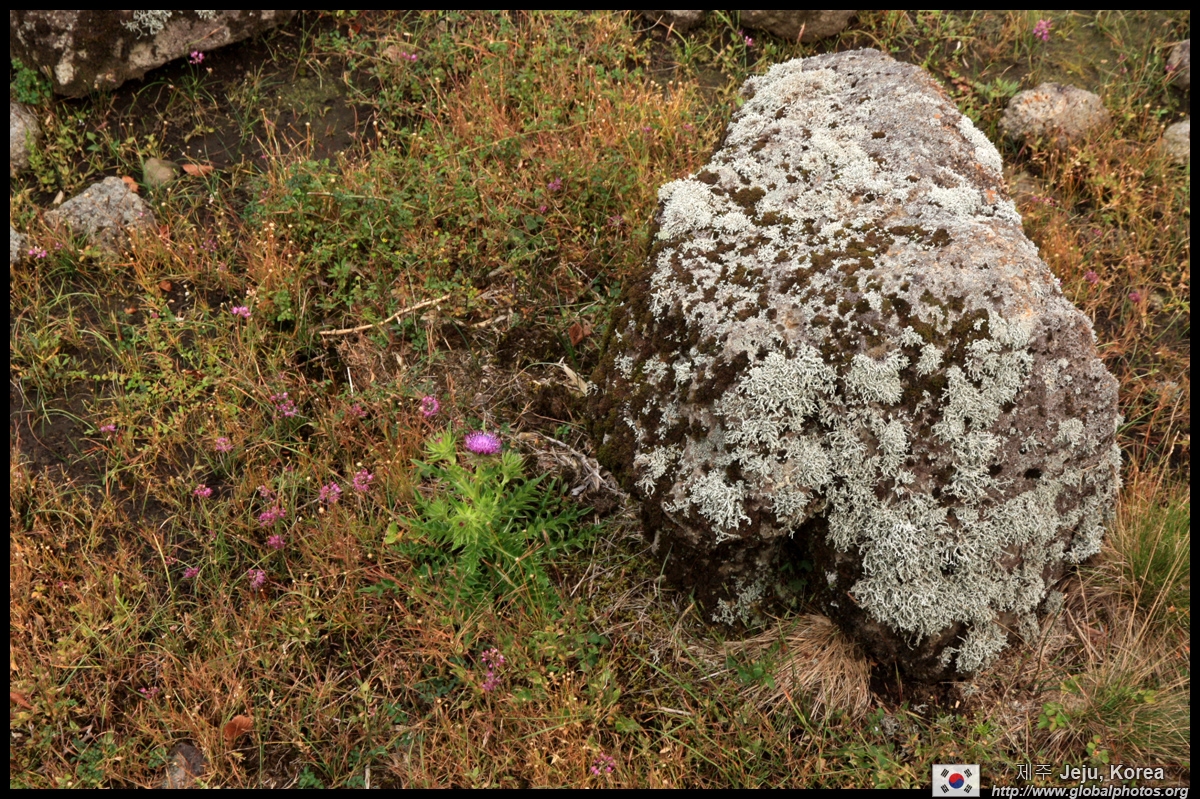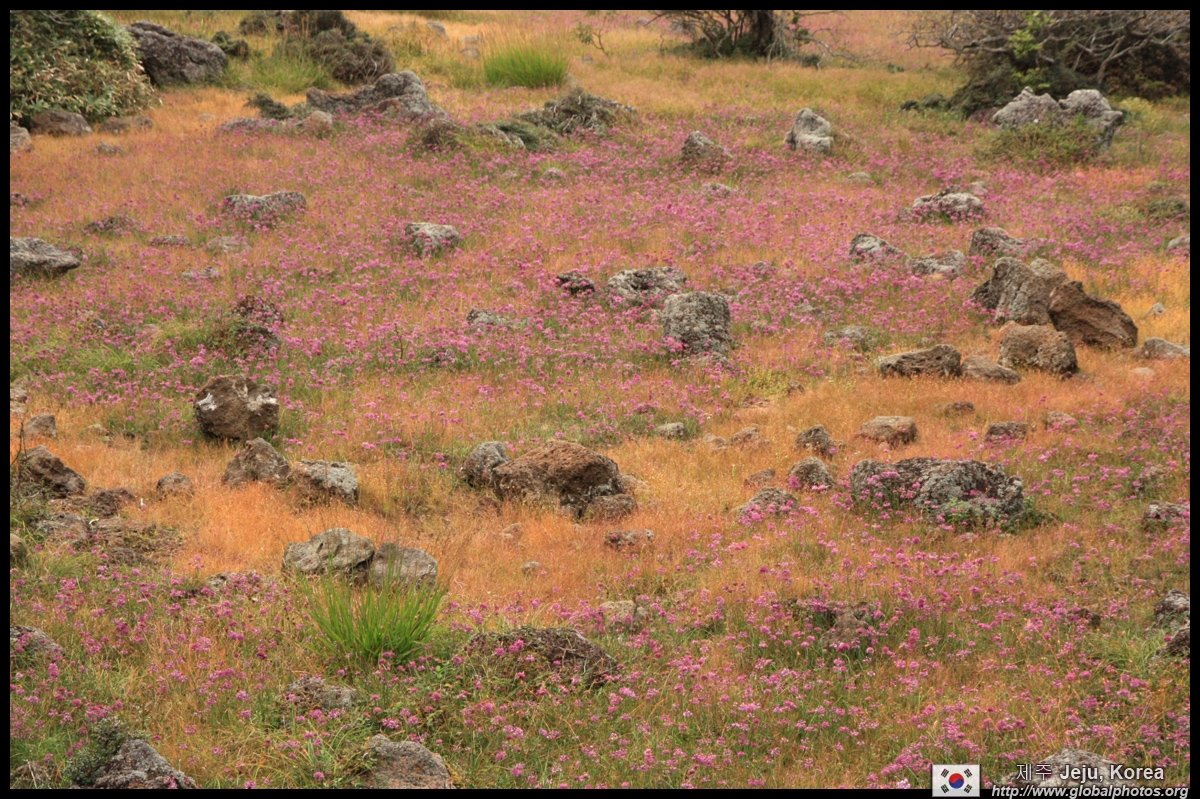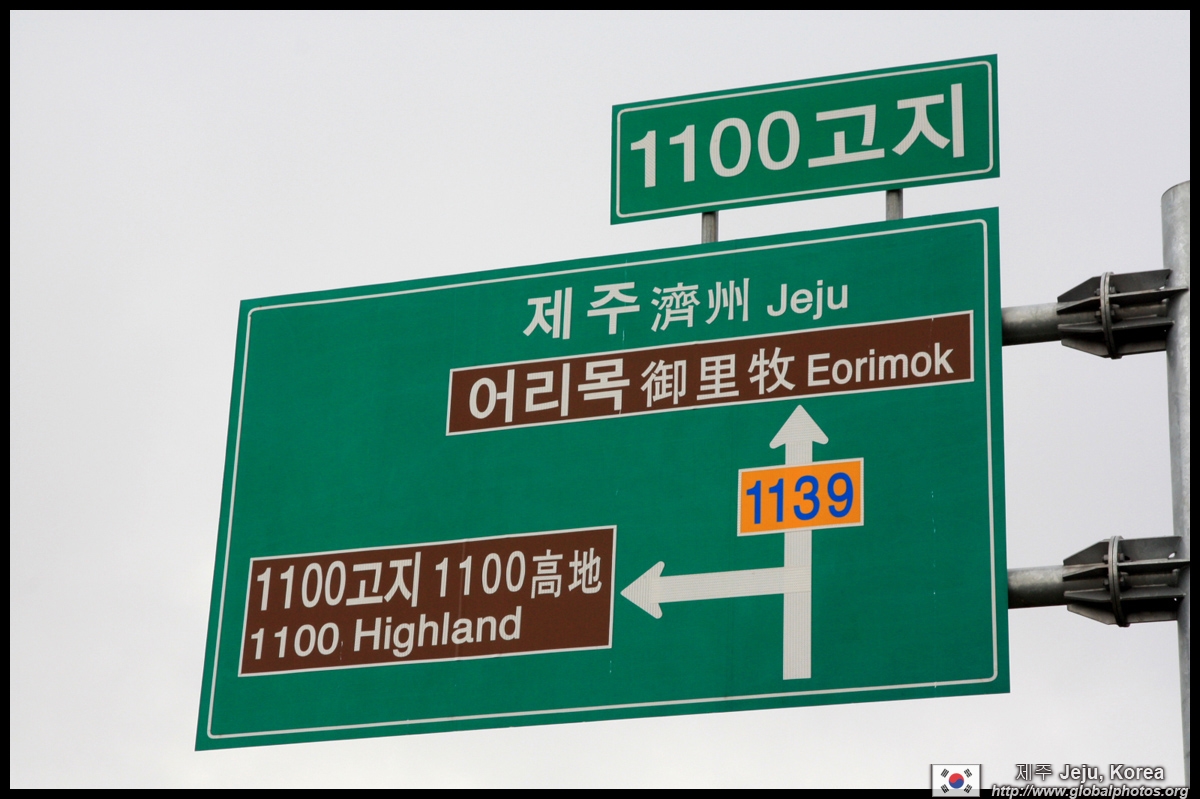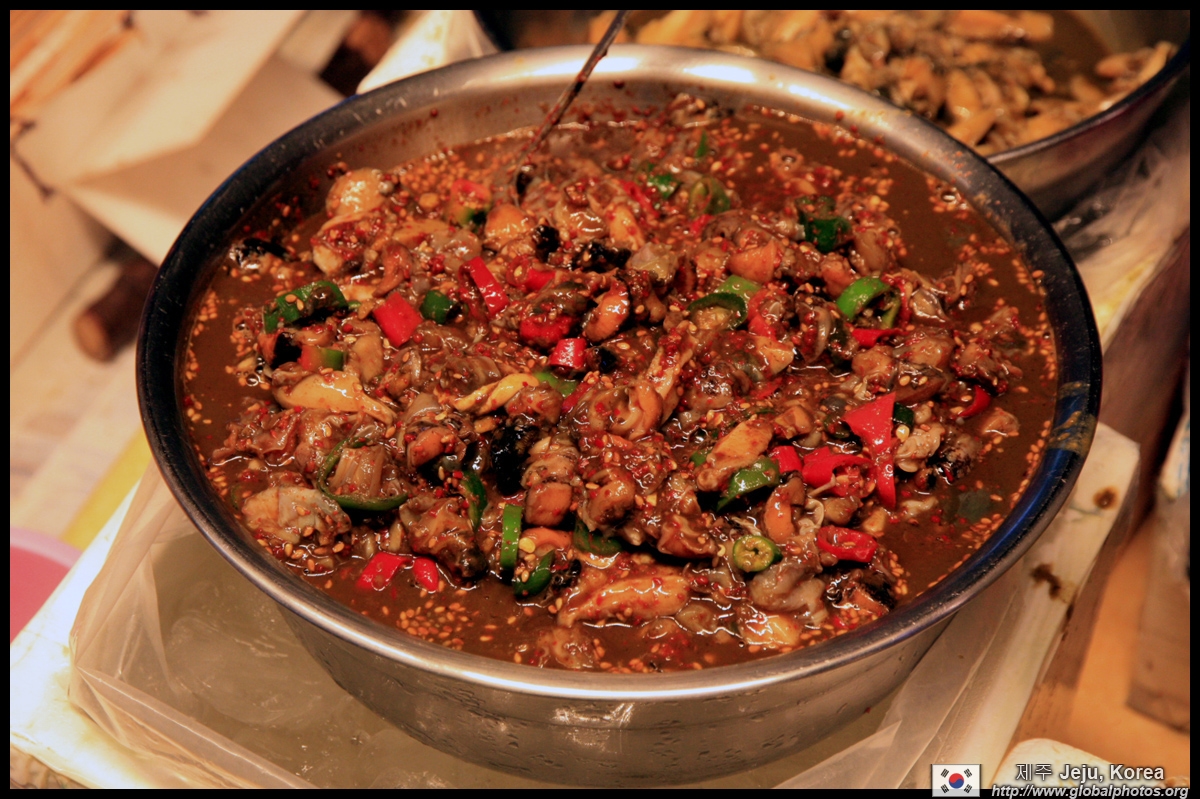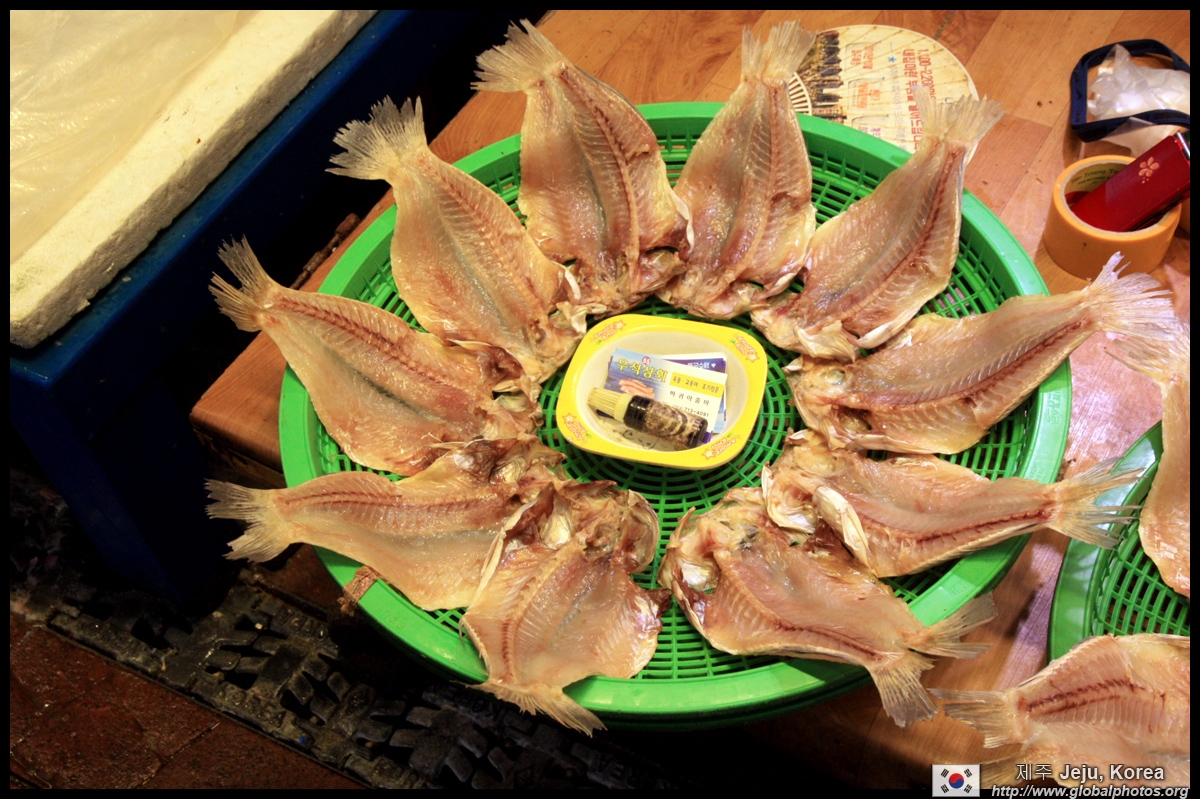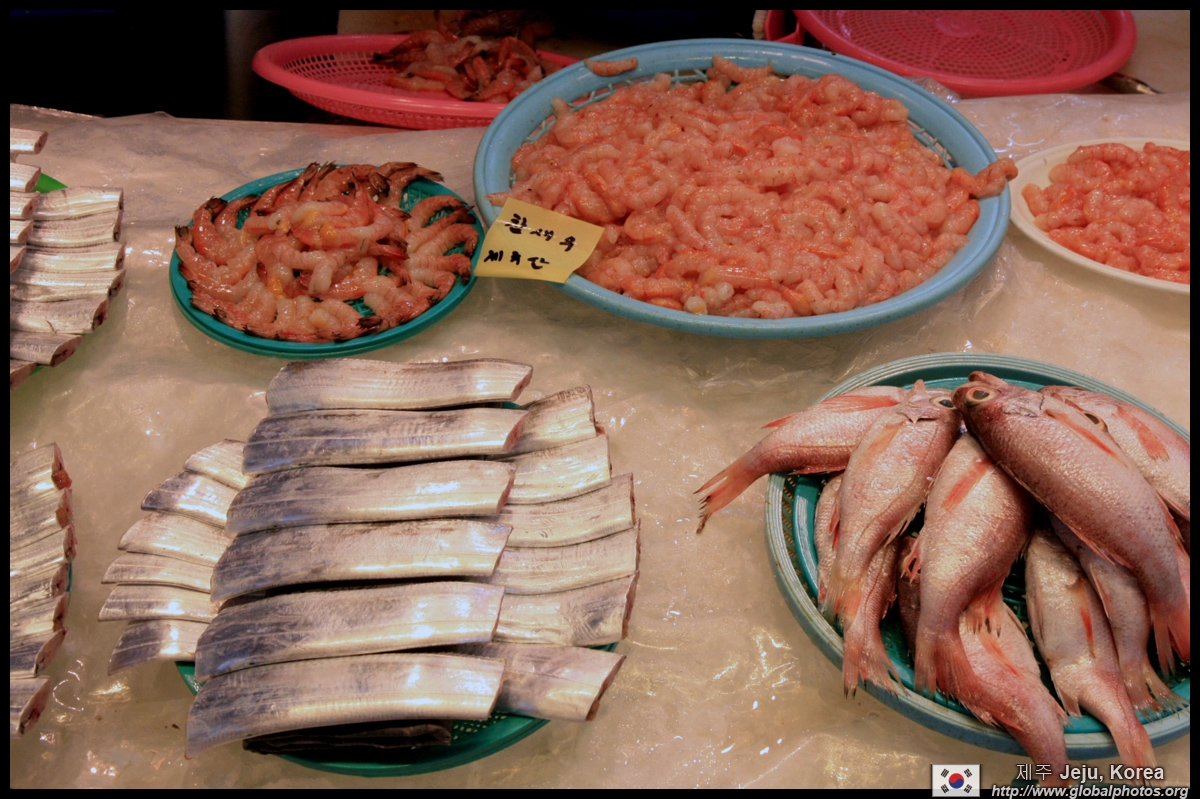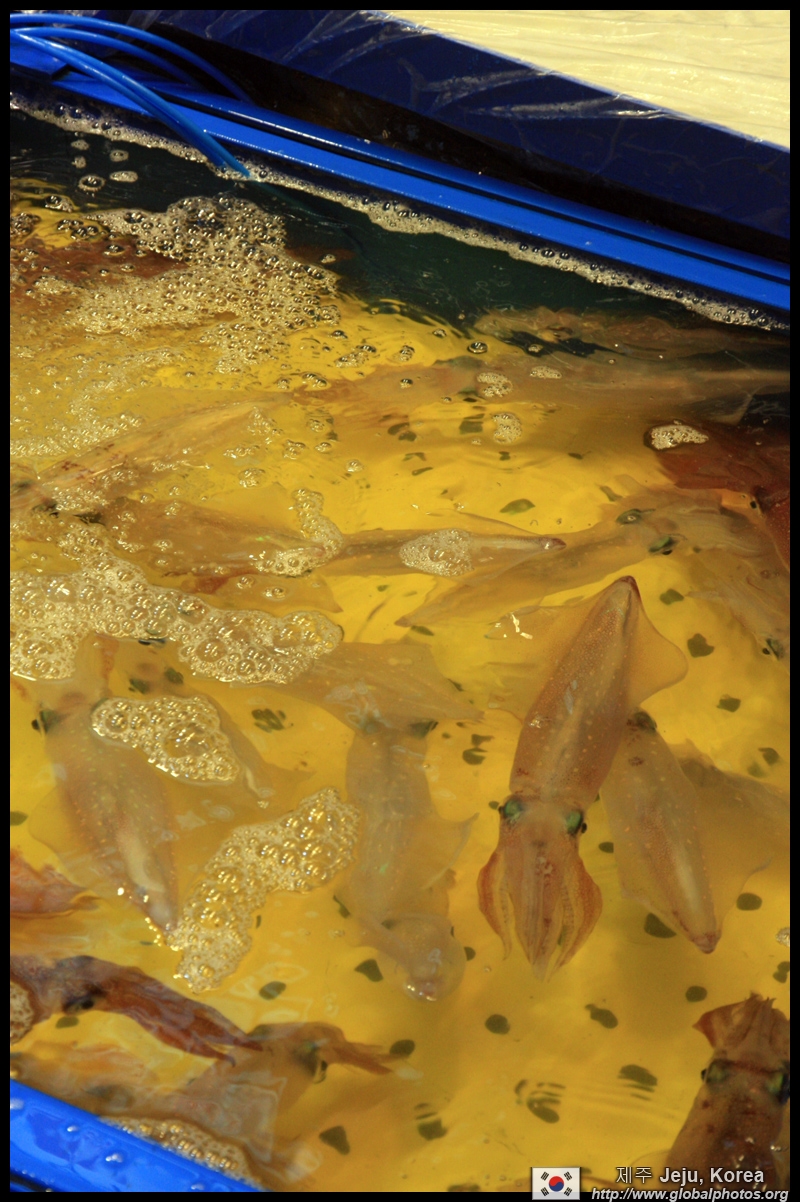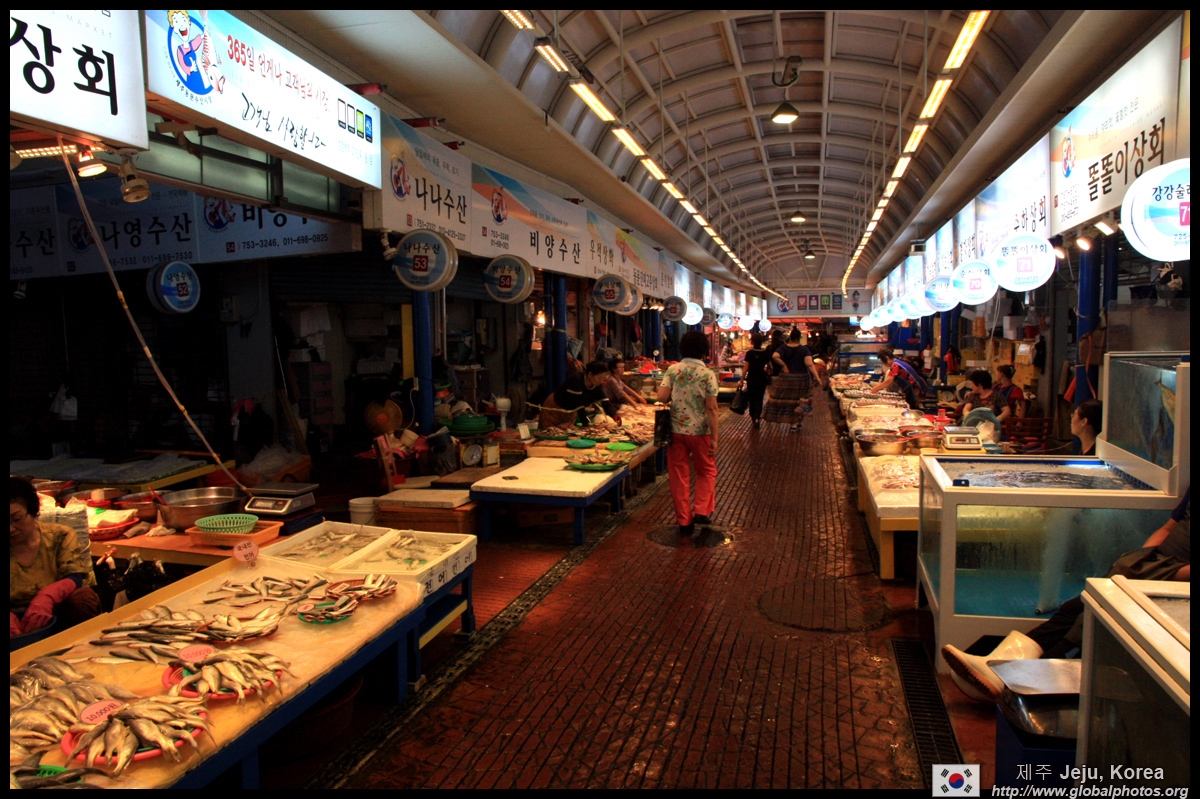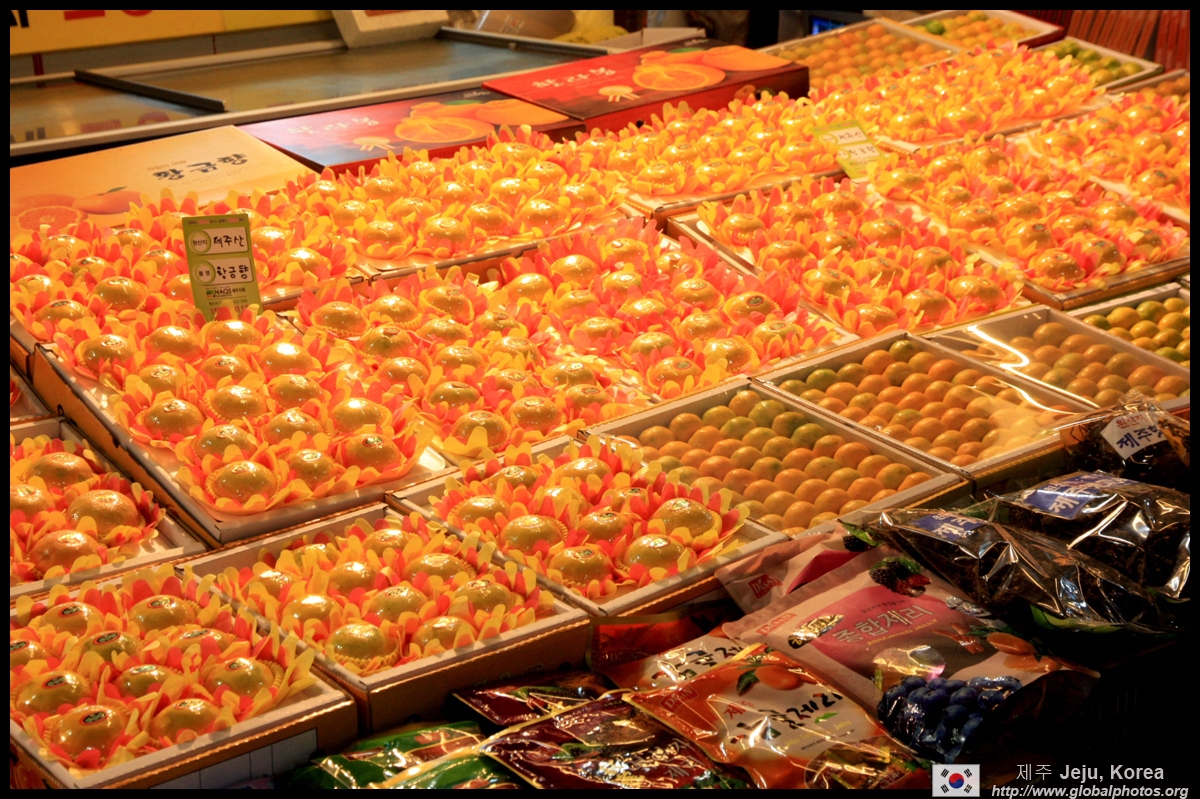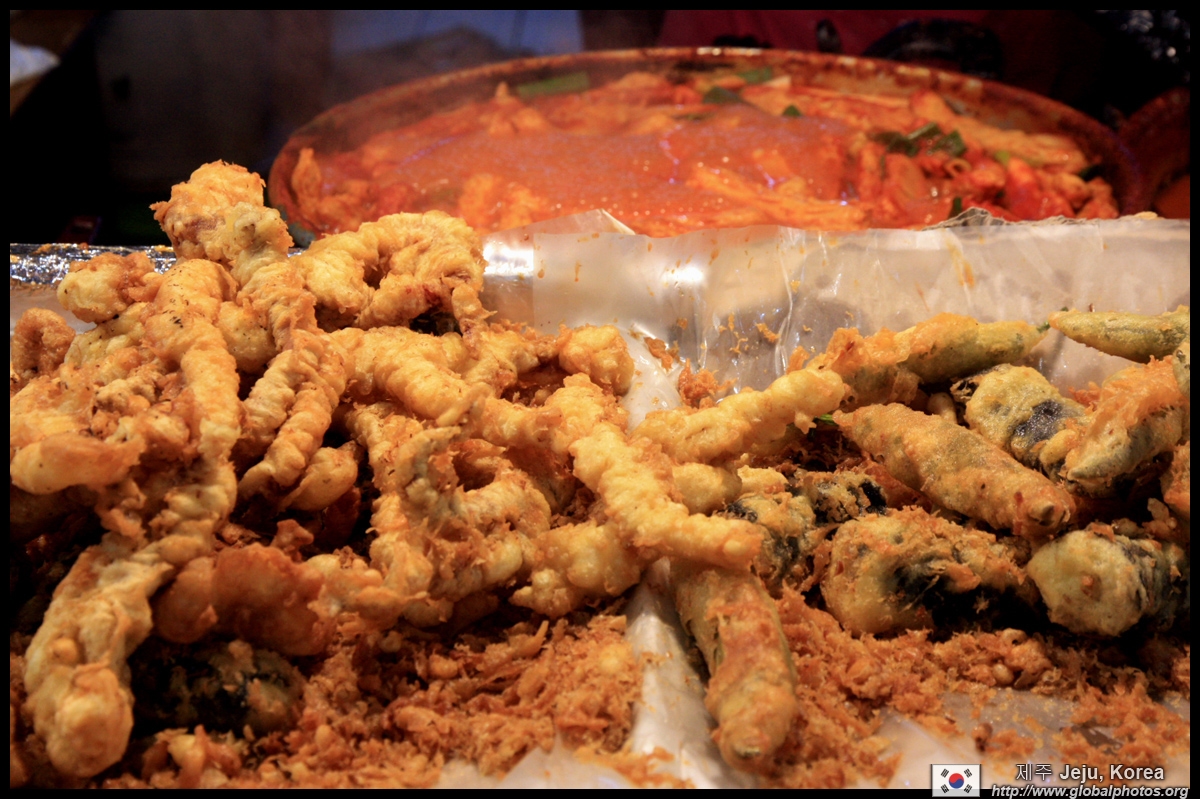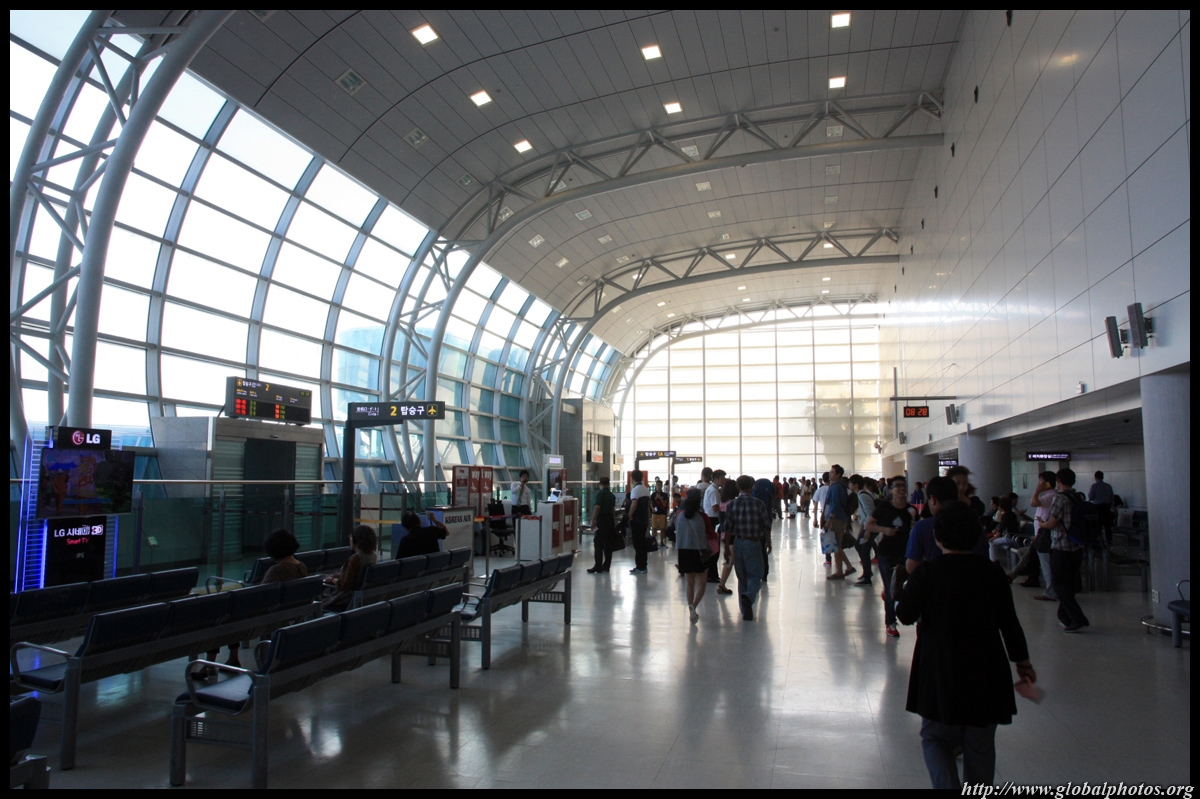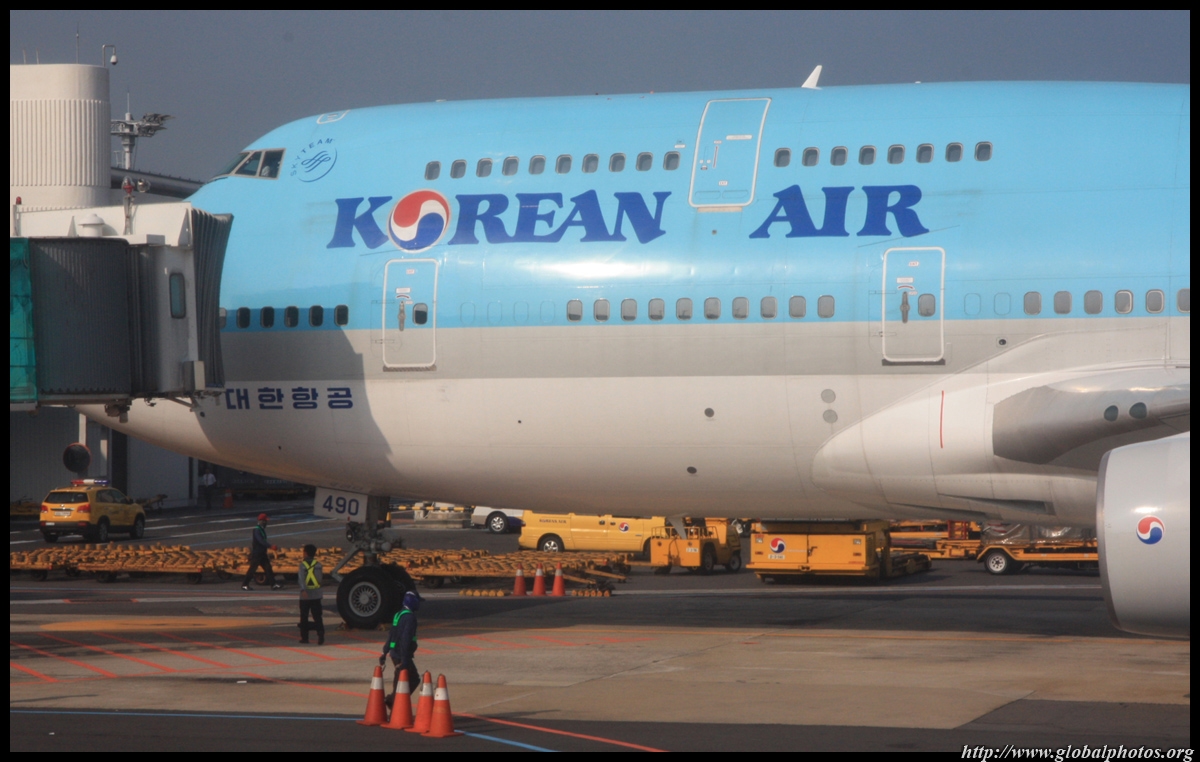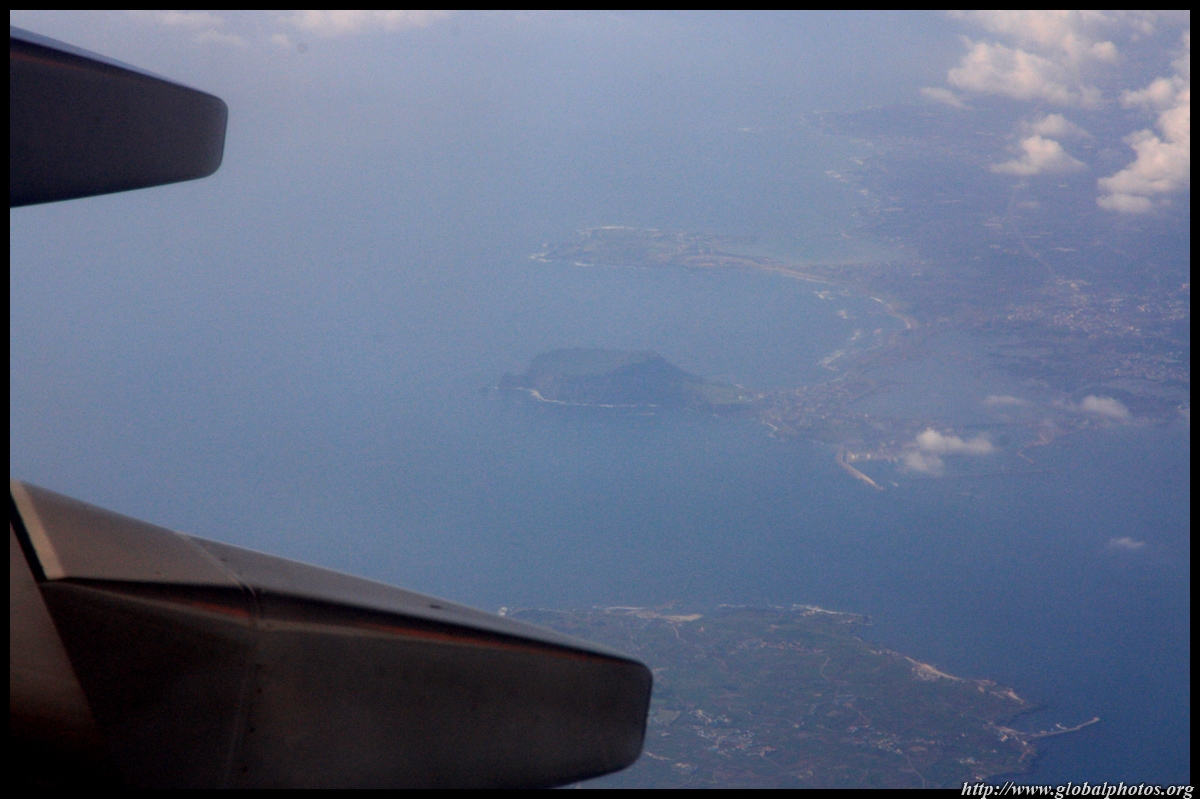Jeju Photo Gallery
Jeju is South Korea's largest island and lies 85 km off the Korean peninsula. Formed by volcanic eruptions some 2 million years ago, its natural beauty was designated a World Heritage site in 2007.Yongduam Rock is the creation of wind and water erosion and is shaped like a dragon. Legend has it that a dragon was shot by the mountain god after stealing jade from Hallasan. He fell at this point and his head froze looking at the sky.
Driving is the best, and oftentimes only, way to explore Jeju. Car rentals are cheap and the roads are easy to use. The north coast of Jeju is picturesque and offers a great sunset-viewing opportunity.
There is a pork delicacy street in Jeju City. The BBQ was quite delicious and came with all the small side dishes.
Jeju is not a very large island and it only took about an hour to reach the east coast from my base in Seogwipo. Seopjikoji is a beautiful coastal park with rocks, ocean waves, and plenty of tourists. These squid are being dried the natural way and will wound up on someone's dinner plate.
These corn dog-like snacks seem quite popular in Korea.
A short drive away, Seongsan Ilchulbong is a hill that rose from the ocean following an eruption about 100,000 years ago. The crater is 90 m high and stretches 600 m in diameter. This is another major tourist spot, and the staircase up to the crater is a bit strenuous.
The crater was filled with vegetation and doesn't seem anything like a volcanic creation.
No elevators here!
Lunch would be an appropriate event after this hike, and seafood features prominently here. Abalone and various kinds of fish are local specialities and come with the typical side dish bonanza.
This is the raw form of abalone, a crawling creature that likes to roam the ocean bottom.
Hot, flowing lava has created a number of interesting formations in Manjanggul Cave. Only 1km is open to tourists, but you can already see remnants of the lava movement and melted stone from the heat. Some magical creatures can survive in this dark environment as well.
While at only 23 m high, Jeongbang Falls is the only waterfall that falls into the ocean in Korea.
Meanwhile, local fishermen were busy cleaning their catch.
Oedolgae is a lonely rock in the ocean. The tourists there were so curious and interested, they ventured beyond the fence and risked falling down the rugged cliffs into a most certain death.
The Jusangjeolli Cliff of Daepo showcases impressive vertical pillar-shaped rocks. Formed due to contraction of thick lava flows rapidly cooling, the oastline
Due to the geography, waves get pushed up high against the coastline.
Fresh sashimi is available for a taste!
Jeju has a lot of museums that don't tie much to the island's geological heritage at all. You can re-live world events at the Teddy Bear Museum.
Today's destination would be the southwest. The coastline was very picturesque and the roads were fairly empty. This part of Jeju seems to be off the beaten path.
The abalone feast continues with a porridge! I'm a big fan of this warm dish even though it was still tropical weather outside.
Legend has it Sanbangsan was a piece of Hallasan thrown by the Great Jade Emperor. This huge mountain appears in an odd location, a bit alone.
Songaksan is much shorter, at only 100 m high, and is a pleasant walk to admire the ocean and nearby Sanbangsan.
I didn't have much energy left to hike Hallasan. Nevertheless, I did walk drive through it and stopped to admire the natural beauty so high up above sea level. My ears were popping as the car winded its way uphill.
Back downhill, I headed towards the traditional market in Jeju City. I'm a big fan of these places, where fresh foods and the side dish specialties are sold.
The lady selling squid would efficiently and quickly cut it up and clean it a few times before wrapping it up for the customer to take home.
If I had a serviced apartment, I would buy some of these fresh and steam them at home.
Fresh seafood was everywhere!
Mandarin oranges are also a popular local crop.
There is also cooked food for some snacking!
2.5 days went quite quickly, and it was time to head back to the mainland. Jeju Airport was bursting with people in the early morning. Guess September is still high-season!
A huge 747 represents a vibrant tourism industry.
My final glimpse of Jeju was an aerial view of Seongsan Ilchulbong. It looks much better from above!
|

